Best Places To Visit in Japan: From Kyoto to Tokyo & Beyond
Japan’s remarkable blend of ancient traditions and cutting-edge modernity makes it a dream destination for travelers worldwide. If you’re planning a trip to this fascinating island nation, discovering the best places to visit in Japan should be your first priority to ensure an unforgettable journey through its diverse landscapes and cultural treasures.
From the neon-lit streets of Tokyo to the serene temples of Kyoto, Japan offers experiences that captivate all your senses. Each region presents its own unique character, cuisine, and customs, inviting you to explore beyond the typical tourist routes and discover Japan’s hidden gems.
Japanese cuisine is a major attraction, from Michelin-starred restaurants to street food and izakayas. Seasonal events like cherry blossom (sakura) viewing in spring and autumn foliage attract millions annually.
Traditional experiences include staying in ryokan inns, visiting onsen hot springs, and witnessing cultural performances like kabuki theater or geisha entertainment.
The efficient transportation system, including the shinkansen bullet trains, makes traveling between regions convenient for tourists, while the culture of omotenashi (hospitality) ensures visitors feel welcome throughout their journey.
Koyoto
Official Websites
- Japan Railways (JR): https://www.jreast.co.jp/e/ (JR East)
- Japan Rail Pass: https://www.japan-rail-pass.com/
- Tokyo Metro: https://www.tokyometro.jp/en/
- Osaka Metro: https://www.osakametro.co.jp/en/
- Keisei Electric Railway (Airport access): https://www.keisei.co.jp/keisei/tetudou/skyliner/us/
- Japan Bus Association: http://www.bus.or.jp/en/
- Ministry of Land, Infrastructure, Transport and Tourism: https://www.mlit.go.jp/en/
Fushimi Inari Taisha Shrine
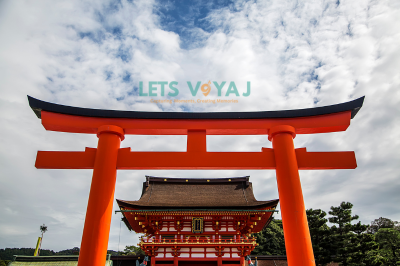
Consistently ranked among the best places to visit in Japan, Fushimi Inari Shrine stands as one of the country’s most iconic and frequently photographed cultural sites. This remarkable shrine, dedicated to Inari, the Shinto god of rice, has earned its reputation as one of the best places to visit in Japan through its most distinctive feature—the seemingly endless path of thousands of vermilion torii gates that wind majestically up the slopes of Mount Inari.
What makes this experience particularly meaningful is that each gate represents a personal connection to the shrine’s spiritual purpose; individuals and businesses seeking prosperity have donated these gates throughout history, with each donor’s name carefully inscribed on their contribution, creating a vivid physical manifestation of Japanese spiritual and commercial traditions that continues to evolve to this day.
The full hike through all the gates to the summit takes approximately 2-3 hours round trip, but even a shorter walk provides a magical experience. Along the route, you’ll encounter smaller shrines, fox statues (believed to be Inari’s messengers), and beautiful viewpoints overlooking Kyoto. The shrine complex is particularly atmospheric in the early morning or evening when crowds thin out and light filters beautifully through the gates.
Basic Information
Full Name: Fushimi Inari Taisha (伏見稲荷大社)
Address: 68 Fukakusa Yabunouchicho, Fushimi Ward, Kyoto, 612-0882, Japan
Opening Hours: Open 24 hours, every day of the year
Official Website: http://inari.jp/
Phone Number: +81 75-641-7331
Getting There By Train
Fushimi Inari Shrine is easily accessible by train, with two stations located very close to the shrine entrance:
JR Line
- Take the JR Nara Line to Inari Station (稲荷駅)
- The shrine’s main entrance is just a 2-minute walk from this station
- This is the most convenient option if you’re coming from Kyoto Station (about 5 minutes, ¥140)
Keihan Line
- Take the Keihan Main Line to Fushimi Inari Station (伏見稲荷駅)
- The shrine is approximately a 5-minute walk from this station
- This is a good option if you’re coming from downtown Kyoto areas like Gion
Getting There By Bus
- From Kyoto Station, you can take Kyoto City Bus #5 or #105
- Get off at Inari Taisha-mae bus stop
- The journey takes approximately 20-30 minutes depending on traffic
Getting There By Taxi
- Taxis are readily available throughout Kyoto
- From Kyoto Station, the ride takes approximately 15 minutes and costs around ¥1,500-2,000
- You can simply tell the driver “Fushimi Inari” or “Inari Taisha” (稲荷大社)
Parking Information
If you’re driving to Fushimi Inari Taisha, there are several parking options:
- Official Shrine Parking Lot:
- Located near the main entrance
- Fee: ¥500 for the first hour, ¥300 for each additional hour
- Limited spaces (approximately 100 cars)
- Can fill up quickly during peak tourist seasons
- Nearby Paid Parking Lots:
- Several private parking lots within 5-10 minutes walking distance
- Prices range from ¥500-1,000 per hour
- Some offer flat day rates of ¥1,000-1,500
Transportation Companies Serving the Area
- JR (Japan Railways): Operates the Nara Line to Inari Station
- Keihan Railway: Operates the Keihan Main Line to Fushimi Inari Station
- Kyoto City Bus: Operates routes #5 and #105
- MK Taxi: One of the major taxi companies in Kyoto (+81 75-778-4141)
- Yasaka Taxi: Another prominent taxi company (+81 75-841-9141)
Nearby Attractions
- Tofukuji Temple (東福寺)
- Famous Zen temple known for autumn colors
- 15-minute walk from Fushimi Inari
- Accessible via JR Nara Line (Tofukuji Station)
- Fushimi Sake District
- Historic sake brewing area with tours and tastings
- 20-minute walk or short train ride on Keihan Line
- Famous breweries include Gekkeikan and Kizakura
- Toji Temple (東寺)
- UNESCO World Heritage site with Japan’s tallest pagoda
- 10 minutes by train from Inari Station to Toji Station
- Sanjusangendo Temple (三十三間堂)
- Famous for its 1,001 statues of Kannon
- About 25 minutes by bus or 10 minutes by taxi
- Kyoto National Museum
- Major art and historical artifacts collection
- 20-minute walk from Fushimi Inari
Official Websites
- Japan Railways (JR): https://www.jreast.co.jp/e/ (JR East)
- Japan Rail Pass: https://www.japan-rail-pass.com/
- Tokyo Metro: https://www.tokyometro.jp/en/
- Osaka Metro: https://www.osakametro.co.jp/en/
- Keisei Electric Railway (Airport access): https://www.keisei.co.jp/keisei/tetudou/skyliner/us/
- Japan Bus Association: http://www.bus.or.jp/en/
- Ministry of Land, Infrastructure, Transport and Tourism: https://www.mlit.go.jp/en/
Official Websites
- Japan Railways (JR): https://www.jreast.co.jp/e/ (JR East)
- Japan Rail Pass: https://www.japan-rail-pass.com/
- Tokyo Metro: https://www.tokyometro.jp/en/
- Osaka Metro: https://www.osakametro.co.jp/en/
- Keisei Electric Railway (Airport access): https://www.keisei.co.jp/keisei/tetudou/skyliner/us/
- Japan Bus Association: http://www.bus.or.jp/en/
- Ministry of Land, Infrastructure, Transport and Tourism: https://www.mlit.go.jp/en/
Kinkaku-ji (Golden Pavilion)
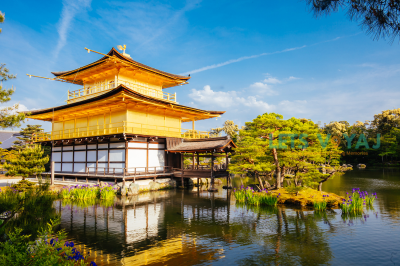
Kinkaku-ji, or the Golden Pavilion, consistently ranks among the best places to visit in Japan, captivating visitors with its breathtaking beauty and historical significance. Officially named Rokuon-ji, this Zen Buddhist temple stands as a testament to Japanese aesthetic principles and spiritual values. The structure, entirely covered in shimmering gold leaf, creates a mesmerizing reflection in the surrounding pond—a sight that epitomizes why it’s considered one of the best places to visit in Japan by travelers worldwide.
The pavilion’s fascinating history adds depth to its visual splendor. While the current structure was rebuilt in 1955 after a mentally disturbed monk tragically burned down the original 14th-century building, architects ensured it remained faithful to the original design, preserving its cultural importance. This dedication to historical authenticity contributes to its status among the best places to visit in Japan for those seeking to understand Japanese architectural heritage.
What makes the pavilion architecturally remarkable is its three distinct floors, each representing different Japanese architectural traditions: the ground floor embodies the elegant Shinden palace style, the second floor reflects the more austere samurai warrior residence style, and the top floor exemplifies the refined Zen temple style. This progression creates a visual journey through Japanese architectural history.
The meticulously designed surrounding garden further enhances the visitor experience. Following classical Japanese garden design principles, the carefully positioned stones, pruned trees, and reflective pond work in harmony to frame the pavilion, which appears to float ethereally on the water’s surface. While visitors cannot enter the pavilion itself, the thoughtfully designed pathway around the garden offers multiple vantage points to appreciate this architectural masterpiece from different angles and perspectives, helping visitors understand why Kinkaku-ji has become one of Japan’s most recognized and cherished cultural treasures.
Basic Information
Full Name: Kinkaku-ji (金閣寺), officially known as Rokuon-ji (鹿苑寺)
Address: 1 Kinkakujicho, Kita Ward, Kyoto, 603-8361, Japan
Opening Hours: 9:00 AM to 5:00 PM daily (last entry at 4:30 PM)
Entrance Fee: ¥500 for adults, ¥300 for elementary and junior high school students
Official Website: https://www.shokoku-ji.jp/kinkakuji/
Phone Number: +81 75-461-0013
Getting There By Bus
From Kyoto Station:
- Take Kyoto City Bus #205 directly to Kinkaku-ji Mae (金閣寺前) bus stop
- The journey takes approximately 40-50 minutes depending on traffic conditions
- Bus fare is ¥230 one-way (consider a one-day bus pass for ¥700 if making multiple trips)
- Buses run approximately every 10-15 minutes during daytime hours
From Downtown Kyoto (Shijo-Kawaramachi area):
- Take Kyoto City Bus #12, #102, or #204 to Kinkaku-ji Mae
- Journey time is about 30-35 minutes
- Same fare as above (¥230)
From Kyoto Imperial Palace area:
- Take Kyoto City Bus #12 or #102 to Kinkaku-ji Mae
- Journey time is approximately 15-20 minutes
Getting There By Taxi
Taxi companies serving Kyoto include:
- MK Taxi: +81 75-778-4141
- Yasaka Taxi: +81 75-841-9141
- Kyoto Taxi: +81 75-801-7771
Parking Information
If you’re driving to Kinkaku-ji, it’s important to know that parking can be limited, especially during peak tourist seasons:
- Official Temple Parking Lot:
- Located adjacent to the temple entrance
- Capacity: approximately 80 vehicles
- Fee: ¥1,000 for the first hour, additional time charged at ¥300 per hour
- Typically opens at 8:30 AM and closes at 5:30 PM
- Nearby Paid Parking Lots:
- Several private parking lots within 5-10 minutes walking distance
- Fees range from ¥500-800 per hour
- Some offer flat rates of ¥1,500-2,000 for the day
- The “Times Parking” chain operates several lots in the vicinity
Nearby Attractions
Kinkaku-ji is located in an area with several other significant temples and attractions, making it possible to visit multiple sites in a single day:
- Ryoan-ji Temple (龍安寺):
- Famous rock garden temple with 15 stones arranged in a way that you can never see all 15 at once
- About 20-minute walk or 5-minute bus ride (Bus #59)
- Features Japan’s most famous Zen rock garden
- UNESCO World Heritage site
- Entrance fee: ¥500
- Ninna-ji Temple (仁和寺):
- UNESCO World Heritage site
- About 15-minute walk or 5-minute bus ride (Bus #59)
- Known for its beautiful garden and five-story pagoda
- Former residence of the imperial family
- Famous for late-blooming cherry trees called Omuro cherries
- Entrance fee: ¥500
- Kitano Tenmangu Shrine (北野天満宮):
- Important Shinto shrine dedicated to the deity of learning
- About 20-minute walk or 10-minute bus ride
- Famous for its monthly flea market (25th of each month) and plum blossoms in February-March
- Entrance to the main shrine is free (garden has a separate fee)
- Daitoku-ji Temple Complex (大徳寺):
- Major Zen temple complex with multiple sub-temples
- About 25-minute walk or 10-minute bus ride
- Known for its beautiful Zen gardens
- Some sub-temples require advance reservations
- Various entrance fees for different sub-temples (typically ¥400-600 each)
- Kyoto Botanical Garden (京都府立植物園):
- Japan’s oldest botanical garden
- About 25-minute bus ride
- Features over 12,000 plant species
- Greenhouse with tropical plants
Arashiyama Bamboo Grove and Surrounding Area
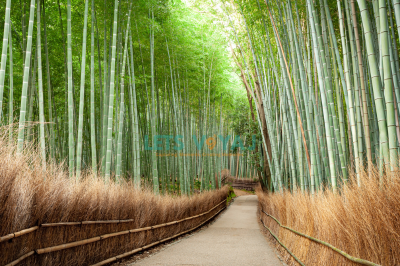
Among the best places to visit in Japan, the Arashiyama district stands out for its collection of attractions nestled within a setting of extraordinary natural beauty. The renowned bamboo grove features majestic stalks of bamboo that create an almost otherworldly atmosphere as sunlight gently filters through the densely packed grove.
This remarkable location, consistently ranked among the best places to visit in Japan by international travelers, offers more than just visual splendor—the gentle rustling of bamboo leaves in the wind produces such a distinctive and meditative sound that it has been officially recognized as one of Japan’s “100 Soundscapes,” making it a multisensory experience that captures the essence of traditional Japanese appreciation for nature.
Beyond the bamboo grove, Arashiyama contains several other important sites: Tenryū-ji Temple (a UNESCO World Heritage site with a spectacular garden), the Iwatayama Monkey Park (home to around 120 Japanese macaques), and the scenic Togetsukyo Bridge spanning the Katsura River. Traditional boat rides on the river offer another perspective of the area’s natural beauty, especially during cherry blossom season or fall foliage.
Basic Information
Address: Saga Tenryuji Susukinobaba-cho, Ukyo Ward, Kyoto, 616-8385, Japan
Opening Hours: Open 24 hours, accessible year-round
Entrance Fee: Free admission
Contact Information: Kyoto City Tourism Association: +81 75-213-1717
Getting There By Train
- JR Line
- Take the JR Sagano/San-in Line to Saga-Arashiyama Station
- From Kyoto Station, the journey takes about 20 minutes (¥240)
- The Bamboo Grove is approximately a 10-15 minute walk from this station
- This is often the most convenient option if you’re using a Japan Rail Pass
- Hankyu Railway
- Take the Hankyu Arashiyama Line to Hankyu Arashiyama Station
- From central Kyoto (Kawaramachi/Karasuma), the journey takes about 25-30 minutes (¥240)
- The Bamboo Grove is approximately a 20-minute walk from this station
- This line is convenient if you’re coming from downtown Kyoto
- Keifuku Randen (Tram)
- Take the Keifuku Electric Railroad (Randen) to Arashiyama Station (the terminus)
- From central Kyoto, take the tram from Shijo-Omiya Station (about 25 minutes, ¥230)
- The Bamboo Grove is approximately a 15-minute walk from this station
- This charming vintage tram provides a nostalgic experience
Getting There By Bus
Kyoto City Bus provides several routes to Arashiyama:
From Kyoto Station:
- Take Kyoto City Bus #28 to Arashiyama/Sagano bus stop
- The journey takes approximately 45-60 minutes depending on traffic
- Bus fare is ¥230 one-way (or use a one-day bus pass for ¥700)
- The Bamboo Grove is about a 10-15 minute walk from the bus stop
From Downtown Kyoto:
- Take Kyoto City Bus #11 or #28 to Arashiyama/Sagano bus stop
- Journey time is about 30-45 minutes
- Same fare as above (¥230)
Getting There By Taxi
Taxi companies serving Kyoto include:
- MK Taxi: +81 75-778-4141 (English service available)
- Yasaka Taxi: +81 75-841-9141
- Kyoto Taxi: +81 75-801-7771
You can simply tell the driver “Arashiyama Bamboo Grove” or “Arashiyama Chikurin” (嵐山竹林). Many drivers will know exactly where to drop you off for the best access.
Scenic Train Option: Sagano Scenic Railway
For a more unique experience, you can take the Sagano Scenic Railway (also known as the “Romantic Train”):
- This sightseeing train runs along the Hozugawa River gorge between Saga-Arashiyama and Kameoka
- It doesn’t directly take you to the Bamboo Grove but adds a scenic element to your journey
- The train operates from March to December (closed in winter)
- Reservations are recommended, especially during autumn foliage season
- One-way trip costs ¥630
- From the Sagano Scenic Railway Torokko Saga Station, it’s about a 10-minute walk to the Bamboo Grove
Parking Information
If you’re driving to Arashiyama, there are several parking options:
- Arashiyama Tourism Association Parking:
- Located near the Togetsukyo Bridge
- Capacity: approximately 200 vehicles
- Fee: ¥1,000-1,500 for the day depending on season
- About a 10-15 minute walk to the Bamboo Grove
- JR Saga-Arashiyama Station Parking:
- Located near the JR station
- Capacity: approximately 50 vehicles
- Fee: ¥600 for the first hour, then ¥300 per additional hour
- Maximum daily rate: ¥1,800
- About a 10-minute walk to the Bamboo Grove
- Private Parking Lots:
- Several smaller lots scattered throughout Arashiyama
- Prices range from ¥200-400 per hour
- Some offer flat day rates of ¥1,500-2,000
Nearby Attractions
The Arashiyama area is filled with significant attractions, making it ideal for a full-day excursion:
- Tenryu-ji Temple (天龍寺):
- UNESCO World Heritage site
- Located at the entrance to the Bamboo Grove
- Famous for its stunning landscape garden and Zen architecture
- Entrance fee: ¥500 for garden only, ¥800 for full temple access
- Togetsukyo Bridge (渡月橋):
- Iconic symbol of Arashiyama
- About 10-minute walk from the Bamboo Grove
- Especially beautiful during cherry blossom and autumn foliage seasons
- Free to cross and photograph
- Okochi Sanso Villa (大河内山荘):
- Former home and garden of silent film star Denjiro Okochi
- Located at the far end of the Bamboo Grove
- Tranquil gardens with spectacular views over Kyoto
- Entrance fee: ¥1,000 (includes a tea and sweet)
- Iwatayama Monkey Park (嵐山モンキーパーク):
- Home to around 120 wild Japanese macaques
- 10-15 minute walk from the Bamboo Grove, across the Togetsukyo Bridge
- Requires a 20-minute uphill hike to reach
- Entrance fee: ¥550
- Arashiyama Boat Rental (嵐山の舟下り):
- Scenic boat rides along the Hozugawa River
- About 15-minute walk from the Bamboo Grove
- Traditional wooden boats available for rental
- Prices start from approximately ¥1,500 per person
- Kameyama Park (亀山公園):
- Peaceful park with walking trails and viewpoints
- Adjacent to the Bamboo Grove
- Free entry
- Excellent views of the Arashiyama mountains and Katsura River
- Jojakkoji Temple (常寂光寺):
- Hillside temple with beautiful autumn colors
- About 15-minute walk from the Bamboo Grove
- Features a five-story pagoda and spectacular city views
- Entrance fee: ¥500
Kiyomizu-dera Temple
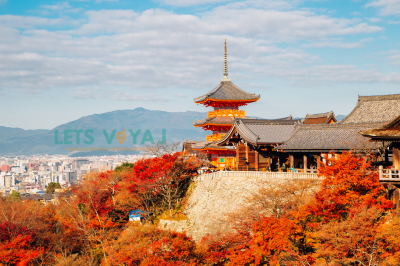
Perched on the wooded hillside of eastern Kyoto, Kiyomizu-dera is consistently ranked among the best places to visit in Japan, captivating visitors with its spectacular views of the city from its famous wooden stage—an engineering marvel constructed without using a single nail.
Founded in 778, this architectural treasure showcases why Kyoto contains so many of the best places to visit in Japan, as the temple’s main hall, reconstructed in 1633, has gracefully survived numerous fires and earthquakes throughout its storied history, offering travelers a profound connection to Japan’s cultural and spiritual heritage.
The temple is named after the pure water of the Otowa Waterfall that runs through the complex. Visitors can drink from three streams said to bring longevity, success in studies, or a fortunate love life (though drinking from all three is considered greedy). The approach to the temple through the steep and narrow lanes of the Higashiyama District adds to the experience, with traditional shops and tea houses lining the path. The area is particularly beautiful when illuminated during spring cherry blossom and fall foliage seasons.
Basic Information
Address: 1-294 Kiyomizu, Higashiyama Ward, Kyoto, 605-0862, Japan
Opening Hours:
- Generally open 6:00 AM to 6:00 PM
- Extended hours during special viewing seasons (cherry blossom, autumn leaves)
- May open until 9:00 PM during illumination events
Contact Information:
- Phone: +81 75-551-1234
- Website: https://www.kiyomizudera.or.jp/en/
Admission Fee:
- Adults: ¥400
- Children (elementary/junior high): ¥200
By Train and Bus (Most Common Method)
From Kyoto Station:
- Take Kyoto City Bus #100, #206, or #207 from Kyoto Station to “Kiyomizu-michi” or “Gojo-zaka” stop
- Travel time: approximately 15-20 minutes
- Bus fare: ¥230 (one-way)
- Walk uphill approximately 10-15 minutes to reach the temple
From Gion Area:
- Take Kyoto City Bus #206 or #207 to “Kiyomizu-michi” stop
- Walk uphill approximately 10 minutes
Nearest Train Stations:
- Kiyomizu-Gojo Station (Keihan Line): 20-minute walk
- Gion-Shijo Station (Keihan Line): 25-minute walk
- Kawaramachi Station (Hankyu Line): 25-minute walk
Parking Information
Parking is limited near Kiyomizu-dera due to its location in a historic district. Most visitors use public transportation.
Nearest Parking Options:
- Kiyomizu-dera Parking Lot
- Limited spaces (approximately 100)
- Fee: ¥1,500 for first 3 hours, ¥500 per hour thereafter
- Often full by mid-morning during peak seasons
- Gojo-zaka Parking Area
- Approximately 50 spaces
- Fee: ¥1,000 for first 2 hours, ¥500 per hour thereafter
- 5-minute walk to temple entrance
- Yasaka Parking Lot
- Larger capacity
- Fee: ¥600 per hour
- 15-20 minute walk to temple
Transportation Companies Serving the Area
Bus Companies:
- Kyoto City Bus (municipal service): Most comprehensive coverage
- Keihan Bus: Operates some routes in eastern Kyoto including Kiyomizu area
Tour Operators:
- JTB Tours: Offers guided bus tours including Kiyomizu-dera
- Sunrise Tours: English-language guided tours
- Kyoto Sightseeing Pass: Available for unlimited bus rides (¥600 for one-day pass)
Nearby Attractions
Within 15-minute walking distance:
- Yasaka Shrine
- Maruyama Park
- Kodai-ji Temple
- Ninenzaka and Sannenzaka (historic shopping streets)
- Gion District (geisha district)
- Otani Cemetery
- Yasaka Pagoda
- Higashiyama District (preserved historic area)
Nijo Castle

Among the best places to visit in Japan, Nijo Castle stands out for representing a different aspect of Kyoto’s rich heritage—the seat of military power rather than religious significance.
Built in 1603 as the Kyoto residence of Tokugawa Ieyasu, the first shogun of the Edo Period, this magnificent flatland castle offers visitors a glimpse into Japan’s feudal past that makes it one of the best places to visit in Japan for history enthusiasts.
The castle’s impressive architecture features two concentric rings of fortifications surrounding the elegant Ninomaru Palace, the historical ruins of the Honmaru Palace, and meticulously maintained traditional gardens that together illustrate the perfect balance of defensive strength and aesthetic refinement that characterized Japan’s shogunate era.
The Ninomaru Palace is famous for its “nightingale floors” – wooden floors that squeak when walked upon, designed as a security measure to alert residents of intruders. The palace’s rooms feature elaborate wood carvings and paintings by artists of the Kano school.
The interior showcases the opulence of shogunal power, while the surrounding gardens, designed by the famous landscape architect Kobori Enshu, demonstrate the refined aesthetic sensibilities of the era. In 1994, Nijo Castle was designated a UNESCO World Heritage Site as part of the “Historic Monuments of Ancient Kyoto.”
Basic Information
Address: 541 Nijojocho, Nakagyo Ward, Kyoto, 604-8301, Japan
Opening Hours:
- 8:45 AM to 5:00 PM (last entry at 4:00 PM)
- Closed on Tuesdays in January, July, August, and December
- Closed December 26-31 for the New Year holiday
- May have extended hours during special seasonal illumination events
Contact Information:
- Phone: +81 75-841-0096
- Website: https://nijo-jocastle.city.kyoto.lg.jp/en/
Admission Fees:
- Adults: ¥1,030
- High school and university students: ¥350
- Elementary and junior high school students: ¥200
- Additional fees may apply for special exhibitions
Transportation Options
By Train (Most Convenient)
The castle has excellent train access with two nearby stations:
Nijojo-mae Station (Subway Tozai Line)
- Located directly in front of the castle’s east entrance
- Just a 1-minute walk to the castle entrance
- Direct connections from Kyoto Station (approximately 15 minutes)
- Train fare from Kyoto Station: ¥260 one-way
Nijo Station (JR Sagano/San-in Line)
- Located about 500 meters southwest of the castle
- Approximately 7-8 minute walk to the castle entrance
- Direct access from Kyoto Station (approximately 10 minutes)
- Train fare from Kyoto Station: ¥150 one-way
By Bus
From Kyoto Station:
- Take Kyoto City Bus #9, #50, or #101 to “Nijojo-mae” bus stop
- Travel time: approximately 20-30 minutes (depending on traffic)
- Bus fare: ¥230 one-way
From Downtown Kyoto/Shijo Area:
- Take Kyoto City Bus #12 or #101 to “Nijojo-mae” bus stop
- Travel time: approximately 15 minutes
- Bus fare: ¥230 one-way
Parking Information
Unlike many historic sites in Kyoto, Nijo Castle has its own parking facilities, making it more accessible for those traveling by car.
Official Nijo Castle Parking Lot:
- Location: Adjacent to the east entrance
- Capacity: Approximately 110 cars
- Fee: ¥800 for the first hour, ¥200 for each additional 30 minutes
- Operation Hours: 8:30 AM to 5:30 PM
Alternative Parking Options:
- Nijo Castle East Parking Lot (Private)
- Approximately 50 spaces
- Fee: ¥600 per hour
- Located across from the east entrance
- Nijo Station Parking Area
- Approximately 70 spaces
- Fee: ¥500 per hour
- 7-8 minute walk to castle entrance
- Coin parking lots near Karasuma Oike
- Various small lots with hourly rates from ¥300-600
- 10-15 minute walk to castle entrance
Transportation Passes:
- Kyoto City Bus One-Day Pass: ¥600 (unlimited bus rides)
- Kyoto Subway & Bus One-Day Pass: ¥900 (unlimited subway and bus rides)
- Kyoto Sightseeing Pass: Various options available at tourist information centers
Nearby Attractions
Within a 15-20 minute walking radius:
- Kyoto Imperial Palace and Gardens (15-minute walk northeast)
- Kyoto International Manga Museum (10-minute walk south)
- Gokonomiya Shrine (10-minute walk west)
- Shinsen-en Garden (7-minute walk southeast)
- Rokkaku-do Temple (15-minute walk southeast)
- Central Kyoto shopping district around Karasuma/Shijo (15-minute walk south)
Higashiyama District
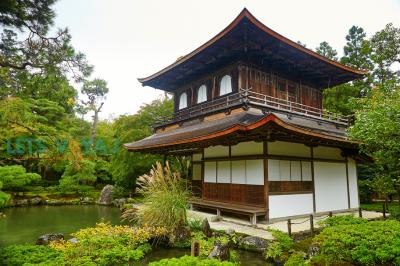
The Higashiyama District is one of the best places to visit in Japan for those seeking to experience the country’s traditional charm. This beautifully preserved historic neighborhood stretches from Kiyomizu-dera Temple in the south to Yasaka Shrine in the north. Narrow stone-paved lanes wind past traditional wooden buildings that house shops, cafés, and restaurants—many of which have been serving pilgrims and travelers for centuries.
Walking through Higashiyama feels like stepping back in time, especially when visitors wear rental kimonos that enhance the nostalgic atmosphere. In addition to Kiyomizu-dera, the district is home to important sites like Kodai-ji Temple and Yasaka Shrine.
The area’s machiya townhouses, with their narrow facades, latticed windows, and interior courtyards, showcase the elegance of traditional Japanese architecture. Higashiyama becomes especially magical during the Hanatoro illumination events held in March and December, making it a must-see highlight among Japan’s cultural treasures.
Basic Information
Location: Eastern Kyoto, along the lower slopes of the eastern mountains
General Area Boundaries:
- North: Ginkaku-ji (Silver Pavilion) area
- South: Kiyomizu-dera Temple area
- West: Kamogawa River (approximately)
- East: The eastern mountains of Kyoto
Main Areas within Higashiyama:
- Northern Higashiyama (Philosopher’s Path area, Ginkaku-ji)
- Central Higashiyama (Nanzen-ji, Heian Shrine area)
- Southern Higashiyama (Kiyomizu-dera, Yasaka Shrine, Gion)
Opening Hours:
As a district rather than a single attraction, different parts have different hours:
- Streets and public areas: Always accessible
- Shops: Typically 9:00 AM to 5:00-6:00 PM
- Temples and shrines: Usually 8:00/9:00 AM to 4:00/5:00 PM (varies by location)
- Restaurants: Lunch hours (11:00 AM-2:00 PM) and dinner hours (5:00 PM-9:00 PM)
Contact Information:
- Kyoto Tourist Information Center: +81 75-752-0227
- Kyoto City Tourism Association: +81 75-752-0227
Transportation Options
By Train and Subway
For Southern Higashiyama (Kiyomizu-dera/Gion area):
- Gion-Shijo Station (Keihan Line)
- Direct access to Gion district
- 5-10 minute walk to Hanamikoji and Shimbashi streets
- 20-25 minute walk uphill to Kiyomizu-dera
- Kiyomizu-Gojo Station (Keihan Line)
- 15-20 minute walk uphill to Kiyomizu-dera
- Good access to southern part of the district
For Central Higashiyama (Heian Shrine area):
- Higashiyama Station (Kyoto Subway Tozai Line)
- Directly adjacent to Heian Shrine
- 10-15 minute walk to Nanzen-ji Temple
For Northern Higashiyama (Philosopher’s Path):
- Keage Station (Kyoto Subway Tozai Line)
- 5-minute walk to southern end of the Philosopher’s Path
- Close to Nanzen-ji Temple
- No direct train access to Ginkaku-ji (Silver Pavilion) – requires bus or substantial walking
By Bus (Most Flexible Option)
Southern Higashiyama (Kiyomizu-dera/Gion area):
- Bus #100, #206 or #207 from Kyoto Station to “Kiyomizu-michi” or “Gojo-zaka” stops
- Bus #100 or #206 to “Gion” stop for Yasaka Shrine and Gion district
- Travel time from Kyoto Station: 20-30 minutes
- Fare: ¥230 one-way
Central Higashiyama (Heian Shrine area):
- Bus #5, #100 or #203 to “Heian Jingu-mae” stop
- Travel time from Kyoto Station: 30-40 minutes
- Fare: ¥230 one-way
Northern Higashiyama (Philosopher’s Path area):
- Bus #5, #17 or #100 to “Ginkakuji-michi” stop for Silver Pavilion
- Travel time from Kyoto Station: 40-50 minutes
- Fare: ¥230 one-way
Parking Information
Parking is extremely limited in the Higashiyama district due to its historic preservation status and narrow streets. Most visitors use public transportation.
Limited Parking Options:
For Southern Higashiyama:
- Kiyomizu-dera Parking Lot
- Limited spaces (approximately 100)
- Fee: ¥1,500 for first 3 hours
- Often full by mid-morning during peak seasons
- Yasaka Shrine Parking Area
- Approximately 50 spaces
- Fee: ¥1,000 for first 2 hours
- Good access to Gion and Yasaka areas
For Central/Northern Higashiyama:
- Heian Shrine Parking
- Limited spaces (approximately 70)
- Fee: ¥800 for first 2 hours
- Convenient for Heian Shrine but 15+ minute walk to other attractions
- Kyoto City Zoo Parking
- Larger capacity
- Fee: ¥1,600 per day
- 10-minute walk to Heian Shrine
For Northern Higashiyama:
- Ginkaku-ji Temple Parking
- Very limited spaces (approximately 30)
- Fee: ¥1,000 for 2 hours
- Almost always full during peak seasons
Key Attractions Within Higashiyama District
Southern Higashiyama:
- Kiyomizu-dera Temple
- Sannenzaka and Ninenzaka (historic preserved streets)
- Yasaka Shrine
- Kodai-ji Temple
- Maruyama Park
- Gion district (geisha district)
- Yasaka Pagoda
- Kennin-ji Temple (oldest Zen temple in Kyoto)
Central Higashiyama:
- Heian Shrine and Gardens
- Nanzen-ji Temple complex
- Kyoto City Zoo
- Kyoto Municipal Museum of Art
- Eikan-do Temple
- Shoren-in Temple
Northern Higashiyama:
- Ginkaku-ji (Silver Pavilion)
- Philosopher’s Path
- Honen-in Temple
- Anraku-ji Temple
- Reikan-ji Temple
Tokyo
Shinjuku

Shinjuku represents Tokyo at its most energetic and diverse, making it one of the best places to visit in Japan for travelers seeking authentic urban experiences. This district contains several distinct worlds within its boundaries. At its heart stands Shinjuku Station, the world’s busiest railway hub, handling over 3.5 million passengers daily through its labyrinthine corridors. The station serves as a gateway to numerous attractions.
East of the station, the neon-lit entertainment district of Kabukicho comes alive after dark with countless restaurants, bars, karaoke establishments, and the famous Robot Restaurant. This area embodies Tokyo’s reputation for sensory overload and technological spectacle, ranking it among the best places to visit in Japan for nightlife enthusiasts.
In stark contrast, just a short walk west of the station lies Shinjuku Gyoen National Garden, one of Tokyo’s most beautiful green spaces. This former imperial garden blends Japanese, English, and French landscaping styles across 144 acres, offering tranquil respite from urban intensity. The garden is particularly magnificent during cherry blossom season (late March to early April) and autumn foliage (late November to early December), making it one of the best places to visit in Japan for nature lovers.
The district also features the Tokyo Metropolitan Government Building, whose twin towers offer free observation decks with panoramic views of the city, including Mount Fuji on clear days. The surrounding skyscraper district houses luxury hotels, department stores, and corporate headquarters that form Tokyo’s distinctive skyline, completing Shinjuku’s status as one of the best places to visit in Japan.
Basic Information
Location: Shinjuku Ward (Shinjuku-ku) is one of Tokyo’s 23 special wards, located in the western part of central Tokyo.
Key Areas within Shinjuku:
- Shinjuku Station area – The world’s busiest railway station and surrounding commercial district
- East Shinjuku (Kabukicho, Golden Gai) – Entertainment and nightlife district
- West Shinjuku – Business district with skyscrapers and the Tokyo Metropolitan Government Building
- Southern Shinjuku (Yoyogi, Takadanobaba) – More residential areas with universities
- Shin-Okubo – Tokyo’s Koreatown neighborhood
General Information Contact:
- Shinjuku Tourist Information Center: +81 3-3344-3160
- Tokyo Tourist Information Center (in Shinjuku): +81 3-5321-3077
- Located inside the Tokyo Metropolitan Government Building
Transportation Options
By Train and Subway (Primary Method)
Shinjuku Station: This is the world’s busiest railway station, serving over 3.5 million passengers daily, with over 200 exits and more than a dozen different train and subway lines.
Major Lines Serving Shinjuku Station:
- JR Lines:
- JR Yamanote Line (Tokyo’s central loop line)
- JR Chuo Line (East-West through central Tokyo)
- JR Sobu Line (connects to eastern Tokyo)
- JR Saikyo Line (connects to Saitama and Yokohama)
- JR Shonan-Shinjuku Line (connects to Yokohama and Kamakura)
- Subway Lines:
- Tokyo Metro Marunouchi Line
- Tokyo Metro Fukutoshin Line
- Toei Shinjuku Line
- Toei Oedo Line
- Private Railways:
- Keio Line (western suburbs)
- Odakyu Line (southwestern suburbs, Hakone)
- Seibu-Shinjuku Line (northwestern suburbs)
Other Stations in Shinjuku Ward:
- Shin-Okubo Station (JR Yamanote Line) – Koreatown area
- Takadanobaba Station (JR Yamanote Line) – University district
- Yoyogi Station (JR Yamanote Line, JR Chuo Line) – Southern Shinjuku
- Okubo Station (JR Sobu Line) – Residential area
- Higashi-Shinjuku Station (Tokyo Metro Fukutoshin Line, Toei Oedo Line) – Eastern Shinjuku
From Tokyo’s Major Areas to Shinjuku:
- From Tokyo Station: 14 minutes via JR Chuo Line (¥200)
- From Shibuya: 7 minutes via JR Yamanote Line (¥160)
- From Ikebukuro: 8 minutes via JR Yamanote Line (¥160)
- From Ueno: 24 minutes via JR Yamanote Line (¥200)
- From Narita Airport: 80-90 minutes via Narita Express (¥3,250)
- From Haneda Airport: 45-55 minutes via Tokyo Monorail and JR Yamanote Line (¥650)
By Bus
Local City Buses:
- Toei Bus services operate throughout Shinjuku
- Bus terminals at the west and east exits of Shinjuku Station
- Fare: Typically ¥210 per ride
- Route maps available at the Shinjuku Bus Terminal
Highway Buses:
- Shinjuku Expressway Bus Terminal (Busta Shinjuku)
- Located above the South Exit of Shinjuku Station
- Connects to various cities across Japan
- Also serves airport limousine buses to Narita and Haneda
Airport Limousine Buses:
- To/from Narita Airport: 85-125 minutes (depending on traffic), ¥3,200
- To/from Haneda Airport: 35-75 minutes (depending on traffic), ¥1,300
- Depart from several major hotels in Shinjuku and the Shinjuku Expressway Bus Terminal
By Car
Driving in central Tokyo, including Shinjuku, is generally not recommended due to congestion and limited parking. However, if you must drive:
Major Roads Accessing Shinjuku:
- Metropolitan Expressway No. 4 (Shinjuku Line)
- Metropolitan Expressway Central Loop
- Koshu Kaido Avenue
- Meiji Dori Avenue
- Yasukuni Dori Avenue
Parking Information
Parking in Shinjuku is expensive and limited, but options are available:
Major Parking Facilities:
- Shinjuku Station West Exit Parking
- Capacity: Approximately 700 spaces
- Fee: ¥300-400 per 30 minutes
- Maximum daily rate: Approximately ¥3,000-4,000
- Located underneath the Shinjuku Sumitomo Building
- Tokyo Metropolitan Government Building Parking
- Capacity: Approximately 250 spaces
- Fee: ¥300 per 30 minutes
- Maximum daily rate: Approximately ¥3,000
- Convenient for visiting the Government Building observation decks
- Shinjuku Gyoen Parking
- Capacity: Approximately 70 spaces
- Fee: ¥500 per hour
- Limited hours (8:30 AM to 6:00 PM)
- Often full during cherry blossom season
- Department Store Parking:
- Isetan: Approximately 250 spaces, ¥400 per 30 minutes (partial validation with purchase)
- Takashimaya: Approximately 200 spaces, ¥400 per 30 minutes (partial validation with purchase)
- Lumine: Approximately 100 spaces, ¥400 per 30 minutes (partial validation with purchase)
- Coin Parking Lots:
- Numerous small coin parking lots scattered throughout Shinjuku
- Rates typically range from ¥300-600 per 30 minutes
- Many use automated systems with instructions only in Japanese
Key Attractions Within Shinjuku
West Shinjuku:
- Tokyo Metropolitan Government Building – Free observation decks on the 45th floor
- Shinjuku Central Park
- Skyscraper District (Sompo Japan Building, Mode Gakuen Cocoon Tower, etc.)
- Tokyo Opera City
East Shinjuku:
- Kabukicho (entertainment district)
- Golden Gai (historic alleyways with tiny bars)
- Shinjuku Gyoen National Garden
- Hanazono Shrine
- Robot Restaurant (tourist attraction with robot performances)
- Omoide Yokocho (Memory Lane/Piss Alley – traditional food alley)
Southern Shinjuku:
- Yoyogi Park
- Meiji Shrine (adjacent to Shinjuku Ward)
- Takashimaya Times Square
- Southern Terrace shopping area
Northern Shinjuku:
- Shin-Okubo (Koreatown)
- Okubo (multicultural district)
Transportation Companies Serving Shinjuku
Railway Companies:
- JR East (Japan Railways) – Yamanote, Chuo, Sobu, Saikyo, Shonan-Shinjuku lines
- Tokyo Metro – Marunouchi, Fukutoshin lines
- Toei Subway – Shinjuku, Oedo lines
- Keio Corporation – Keio Line, Keio New Line
- Odakyu Electric Railway – Odakyu Line
- Seibu Railway – Seibu-Shinjuku Line
Bus Companies:
- Toei Bus (Tokyo Metropolitan Government)
- Keio Bus
- Airport Limousine (Airport Transportation Service)
- JR Bus Kanto
- WILLER EXPRESS (highway buses)
Taxi Companies:
- Nihon Kotsu: +81 3-5755-2336
- Tokyo Hinomaru: +81 3-3361-8291
- Green Cab: +81 3-3982-2255
- Japan Taxi app: Available for smartphone booking
Transportation Passes:
- Tokyo Subway Ticket: 24/48/72-hour unlimited subway rides (¥800/1,200/1,500)
- Tokyo Free Kippu: One-day unlimited travel on JR, subway, and buses in central Tokyo (¥1,600)
- JR Pass: For tourists; unlimited JR travel (including Shinjuku) for 7/14/21 days
- PASMO or Suica: Rechargeable IC cards for convenient travel on all transport systems
Asakusa and Senso-ji Temple
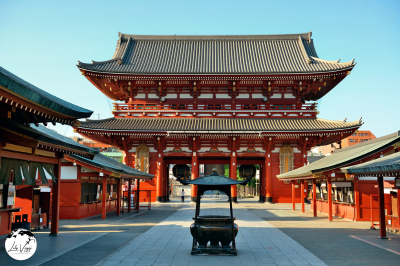
Asakusa offers the most accessible glimpse into Tokyo’s pre-modern past. The district centers around Senso-ji, Tokyo’s oldest and most significant Buddhist temple, founded in 628 CE. Visitors enter through the imposing Kaminarimon (“Thunder Gate”), with its massive red lantern, and proceed along Nakamise Shopping Street—a centuries-old market stretching 250 meters to the temple’s main hall.
The approach to Senso-ji immerses visitors in traditional Japanese architecture, with the five-story pagoda and main hall showcasing classical design elements. The temple grounds contain numerous smaller shrines, gardens, and statues that reveal aspects of Japanese Buddhist tradition. Visitors can participate in rituals like drawing omikuji (fortune papers) and wafting incense smoke toward ailments to promote healing.
The surrounding Asakusa district preserves a more relaxed, old-fashioned atmosphere than other parts of Tokyo. Traditional craft shops, restaurants serving classic Tokyo cuisine, and rickshaw drivers offering tours contribute to the historical ambiance. This area brilliantly illustrates how Tokyo maintains connections to its past amidst rapid modernization.
From the nearby Sumida River, visitors can board water buses for scenic cruises with views of the Tokyo Skytree, providing a memorable perspective on the city’s evolution from feudal center to global metropolis.
Basic Information
Senso-ji Temple Address: 2-3-1 Asakusa, Taito City, Tokyo 111-0032, Japan
Opening Hours:
- Temple Grounds: Open 24 hours
- Main Hall: 6:00 AM to 5:00 PM (October to March) 6:00 AM to 6:00 PM (April to September)
- Nakamise Shopping Street: Most shops open 9:00 AM to 6:00 PM
Contact Information:
- Phone: +81 3-3842-0181
- Website: https://www.senso-ji.jp/english/
Admission Fee:
- Temple Grounds and Main Hall: Free
- Asakusa Shrine: Free
- Nakamise Shopping Street: Free (shopping costs extra)
- Senso-ji Temple Garden (Demboin): ¥300 (limited seasonal opening)
Transportation Options
By Train and Subway (Most Convenient)
Asakusa is well-connected by Tokyo’s public transportation system, with multiple stations serving the area:
Asakusa Station (closest to Senso-ji Temple) Served by:
- Tokyo Metro Ginza Line
- Direct connections from Ueno (5 minutes)
- Direct connections from Ginza (15 minutes)
- Direct connections from Shibuya (30 minutes)
- Fare: ¥170-240 depending on starting point
- Toei Asakusa Line
- Direct connections from Shimbashi (15 minutes)
- Direct connections from Shinagawa (22 minutes)
- Fare: ¥170-270 depending on starting point
- Tobu Skytree Line (formerly Tobu Isesaki Line)
- Direct connections to/from Nikko and Kinugawa Onsen
- Direct connections to Tokyo Skytree (2 minutes)
- Fare within Tokyo: ¥150-300 depending on starting point
Nearby Alternative Stations:
- Tawaramachi Station (Tokyo Metro Ginza Line): 10-minute walk to Senso-ji
- Asakusa Station (Tsukuba Express): 8-minute walk to Senso-ji
- Kuramae Station (Toei Asakusa Line and Oedo Line): 15-minute walk to Senso-ji
By Bus
Tokyo City Bus:
- Route patterns vary, but several Toei Bus routes serve Asakusa
- Look for buses heading to “Asakusa” or “Taito”
- Standard fare: ¥210 (within 23 wards of Tokyo)
- Nearest bus stops: “Asakusa-eki-mae” or “Kaminarimon”
Sightseeing Buses:
- Tokyo Sky Hop Bus: Hop-on, hop-off sightseeing bus with Asakusa stops
- Fare: One-day pass ¥3,000-4,000
- Operates: 9:00 AM to 7:00 PM (frequency varies)
Water Bus:
- Tokyo Cruise Ship operates water bus services on the Sumida River
- Connects Asakusa with Odaiba, Hinode Pier, and Hamarikyu Gardens
- Departure point: Asakusa Pier (5-minute walk from Senso-ji)
- Fare: ¥680-1,560 depending on destination
- Operating hours: 10:00 AM to 5:00 PM (varies by season)
Parking Information
Parking near Senso-ji Temple is limited and expensive. It’s generally recommended to use public transportation, but if you must drive:
Nearest Parking Options:
- Asakusa Public Parking
- Location: 2-7 Asakusa, Taito City
- Capacity: Approximately 100 vehicles
- Fee: ¥400-500 per hour
- 5-minute walk to Senso-ji Temple
- Often full during weekends and holidays
- Asakusa ROX Parking
- Location: Inside ROX shopping complex
- Capacity: Approximately 300 vehicles
- Fee: ¥300 per 30 minutes (discounted rate with shopping)
- 8-minute walk to Senso-ji Temple
- Ekimae Parking Asakusa
- Location: 1-chome, Asakusa, near the station
- Capacity: Approximately 60 vehicles
- Fee: ¥400 per 30 minutes
- 3-minute walk to Senso-ji Temple
- Small spaces, not suitable for large vehicles
- Taito Ryokan Parking
- Location: 2-3 Kaminarimon, Taito City
- Capacity: Approximately 50 vehicles
- Fee: ¥300 per 30 minutes
- 5-minute walk to Senso-ji Temple
Nearby Attractions
Within walking distance of Senso-ji Temple:
- Asakusa Shrine (adjacent to Senso-ji)
- Shinto shrine built in 1649
- Hosts the famous Sanja Matsuri festival in May
- Nakamise Shopping Street
- 250-meter traditional shopping street leading to Senso-ji
- Over 50 shops selling traditional crafts, snacks, and souvenirs
- Asakusa Culture Tourist Information Center
- Modern building with free observation deck
- Excellent views of Senso-ji and surrounding area
- Information services and cultural exhibits
- Sumida Park
- Riverside park with cherry blossoms in spring
- Great views of Tokyo Skytree and Asahi Beer Hall
- Starting point for river cruises
- Hanayashiki Amusement Park
- Japan’s oldest amusement park (opened 1853)
- Retro attractions and rides
- 5-minute walk from Senso-ji
- Kappabashi Street (Kitchenware Street)
- Famous for restaurant supply shops
- 15-minute walk from Senso-ji
- Tokyo Skytree
- Japan’s tallest structure (634m)
- Shopping, restaurants, and observations decks
- 20-minute walk or 2-minute train ride from Asakusa
- Sumida Hokusai Museum
- Museum dedicated to the ukiyo-e artist Hokusai
- 15-minute walk from Senso-ji
- Sumida River Cruise
- Boat tours departing from Asakusa Pier
- Routes to Odaiba, Hinode, and Hamarikyu Gardens
- Asahi Beer Tower
- Distinctive golden flame building
- Houses restaurants and bars
- 10-minute walk from Senso-ji
Shibuya

Shibuya represents Tokyo’s position at the forefront of global youth culture, fashion trends, and consumer technology. The district’s defining feature is Shibuya Crossing, the world’s busiest pedestrian intersection, where up to 3,000 people cross simultaneously during peak times. This “scramble crossing” has become an iconic image of contemporary Tokyo, featured in numerous films and photographs symbolizing urban Japan.
The Shibuya area serves as a living laboratory for emerging trends, with fashion boutiques, technology stores, and entertainment venues constantly introducing new products and concepts. Landmark department stores like Shibuya 109 function as barometers for Japanese fashion movements, while the recently developed Shibuya Stream and Shibuya Scramble Square offer cutting-edge shopping and dining experiences.
The district also features important cultural symbols like the Hachiko statue—a monument to a loyal dog that waited for its deceased owner for nine years, becoming a national symbol of loyalty. The newly redeveloped Miyashita Park combines urban green space with retail elements, exemplifying Tokyo’s innovative approaches to urban design.
For those interested in Japanese pop culture, Shibuya offers excellent opportunities to experience contemporary music, art, and animation through venues like Tower Records and numerous galleries displaying works by emerging artists.
Meiji Shrine and Harajuku
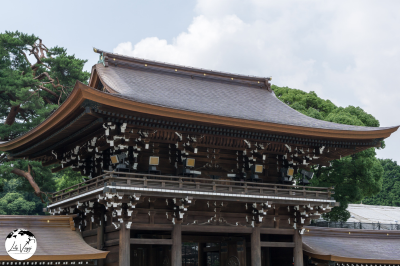
This fascinating area juxtaposes profound spiritual tradition with cutting-edge youth culture. Meiji Shrine, dedicated to Emperor Meiji and Empress Shoken, sits within a 170-acre evergreen forest that creates an astonishing oasis of tranquility in central Tokyo. The shrine complex, with its massive torii gates constructed of 1,500-year-old cypress wood, exemplifies classical Shinto architecture in its elegant simplicity.
Visitors follow wide gravel paths through the forest before reaching the main shrine buildings, where they can observe traditional Shinto rituals, write prayer requests on wooden tablets (ema), and—if fortunate—witness a traditional Japanese wedding procession. The Inner Garden features a classical Japanese landscape design, including the well where Emperor Meiji and Empress Shoken reportedly drew water.
In dramatic contrast, just steps from this serene sanctuary lies Takeshita Street, the epicenter of Harajuku youth fashion. This narrow pedestrian thoroughfare teems with teenagers shopping for cutting-edge fashion, sampling creative street foods like rainbow cotton candy and crepes, and expressing their individuality through distinctive style tribes. The surrounding streets contain both high-end international fashion boutiques and small independent designers, making the area a global fashion influence.
This remarkable juxtaposition illustrates Tokyo’s ability to maintain reverence for tradition while embracing youthful innovation—two complementary aspects of Japanese culture existing side by side.
Basic Information
Meiji Shrine
Address: 1-1 Yoyogi-Kamizonocho, Shibuya City, Tokyo 151-8557, Japan
Opening Hours:
- January to February: 6:30 AM to 5:00 PM
- March to April: 6:00 AM to 6:00 PM
- May to June: 5:30 AM to 6:30 PM
- July to August: 5:00 AM to 7:00 PM
- September to October: 5:30 AM to 6:30 PM
- November to December: 6:00 AM to 5:00 PM
- New Year’s Day (January 1): Open all night until evening of January 1
Contact Information:
- Phone: +81 3-3379-5511
- Website: https://www.meijijingu.or.jp/en/
Admission Fee:
- Shrine grounds: Free
- Inner Gardens (Meiji Jingu Gyoen): ¥500 for adults, ¥400 for seniors, free for children under 12
Harajuku District
Location: Harajuku is a neighborhood in Shibuya Ward, centered around Takeshita Street and the surrounding area
Opening Hours:
As a district rather than a single attraction, different areas operate at different times
- Takeshita Street shops: Generally 10:00 AM to 8:00 PM
- Larger department stores: 11:00 AM to 8:00 PM
- Cafes and restaurants: Various hours, many open from 10:00 AM to 10:00 PM
- Clubs and late-night venues: Some open until early morning
Transportation Options
By Train and Subway (Most Convenient)
The area is served by multiple stations, each with slightly different access points:
Harajuku Station (JR Yamanote Line)
- The most direct access to both Meiji Shrine and Harajuku
- Located directly between the shrine entrance and Takeshita Street
- Accessible via the JR Yamanote Line (Tokyo’s circular line)
- Connects to major Tokyo stations including Shibuya (1 stop), Shinjuku (2 stops), and Tokyo Station (13 stops)
Meiji-Jingumae Station (Tokyo Metro)
- Served by Tokyo Metro Chiyoda Line and Fukutoshin Line
- Located near the entrance to Takeshita Street
- Approximately 5-minute walk to Meiji Shrine entrance
- Connects to Shibuya, Shinjuku, and Ikebukuro without transfers on the Fukutoshin Line
Yoyogi Station (JR Lines)
- Served by JR Yamanote Line and JR Chuo-Sobu Line
- Located near the southwestern entrance to Meiji Shrine
- Approximately 10-minute walk to the shrine
- Convenient for those coming from western Tokyo
Sangubashi Station (Odakyu Line)
- Closest station to the Meiji Shrine’s northern entrance
- Approximately 10-minute walk to the shrine
- Connects to Shinjuku and western suburbs
From Major Tokyo Areas to Harajuku/Meiji Shrine:
- From Tokyo Station: 20 minutes via JR Yamanote Line (¥200)
- From Shinjuku: 7 minutes via JR Yamanote Line (¥160)
- From Shibuya: 3 minutes via JR Yamanote Line (¥150)
- From Ikebukuro: 13 minutes via JR Yamanote Line (¥190)
- From Narita Airport: 80 minutes via Narita Express to Shinjuku, then JR Yamanote Line (¥3,250)
- From Haneda Airport: 50 minutes via Tokyo Monorail to Hamamatsucho, then JR Yamanote Line (¥650)
By Bus
Tokyo City Bus:
- Several Toei Bus routes serve the area
- Bus stop “Jingu-mae” or “Meiji-Jingu-mae” is closest to the shrine entrance
Sightseeing Buses:
- Tokyo Sky Hop Bus (hop-on, hop-off service) stops at Harajuku
- Fare: One-day pass ¥3,000-4,000
- Operates: 9:00 AM to 7:00 PM (frequency varies)
Parking Information
Nearest Parking Options:
- Yoyogi Park Parking
- Location: Adjacent to Yoyogi Park, near the shrine
- Capacity: Approximately 230 vehicles
- Fee: ¥300 per hour
- Operating hours: 8:00 AM to 8:00 PM
- 5-minute walk to Meiji Shrine
- Takeshita Street Parking
- Location: Near Takeshita Street entrance
- Capacity: Approximately 50 vehicles
- Fee: ¥500 per 30 minutes
- Often full, especially on weekends
- Omotesando Hills Parking
- Location: Underneath Omotesando Hills shopping complex
- Capacity: Approximately 200 vehicles
- Fee: ¥400 per 30 minutes (partial validation with purchase)
- 10-minute walk to Meiji Shrine
- Laforet Harajuku Parking
- Location: Underneath Laforet Harajuku department store
- Capacity: Approximately 50 vehicles
- Fee: ¥500 per 30 minutes (partial validation with purchase)
- 5-minute walk to Takeshita Street
Nearby Attractions
Within walking distance of Meiji Shrine and Harajuku:
- Yoyogi Park
- Directly adjacent to Meiji Shrine
- Large public park with wide lawns and forested areas
- Popular for picnics, street performances, and seasonal events
- Takeshita Street
- Heart of Harajuku’s youth culture
- Narrow pedestrian street lined with trendy shops and cafes
- Famous for crepe stands, fashion boutiques, and kawaii culture
- 2-minute walk from Harajuku Station
- Omotesando Avenue
- Often called “Tokyo’s Champs-Élysées”
- Tree-lined boulevard with high-end fashion boutiques
- Notable for its striking architecture and designer stores
- 5-minute walk from Harajuku Station
- Omotesando Hills
- Upscale shopping complex designed by Tadao Ando
- Houses numerous luxury brand stores and restaurants
- 10-minute walk from Meiji Shrine
- Togo Shrine
- Small Shinto shrine dedicated to Admiral Togo
- Quiet counterpoint to the busy Meiji Shrine
- 7-minute walk from Harajuku Station
- Nezu Museum
- Houses a collection of Japanese and East Asian art
- Features a spectacular traditional garden
- 15-minute walk from Harajuku Station
- Ukiyo-e Ota Memorial Museum of Art
- Specializes in ukiyo-e woodblock prints
- Rotating exhibitions from a vast collection
- 10-minute walk from Harajuku Station
- Cat Street
- Pedestrian street connecting Harajuku and Shibuya
- Home to boutiques, cafes, and vintage shops
- 5-minute walk from Takeshita Street
- Laforet Harajuku
- Multi-level fashion department store
- Focuses on cutting-edge Japanese designers
- 3-minute walk from Harajuku Station
- Kiddy Land
- Multi-floor toy store with character merchandise
- Japanese and international toy brands
- 7-minute walk from Harajuku Station
Tokyo National Museum and Ueno Park
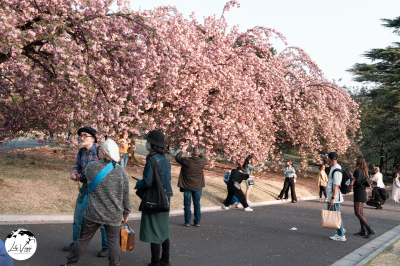
Ueno Park provides Tokyo’s most comprehensive cultural experience within a pleasant natural setting. The park’s centerpiece, Tokyo National Museum, houses the world’s largest collection of Japanese art and antiquities, spanning 12,000 years of history through over 110,000 items. The museum’s displays include National Treasures like the Jomon period “Venus” figurines, samurai armor, exquisite screen paintings, and ceramics that trace the development of Japanese aesthetic sensibilities.
Beyond the national museum, Ueno Park contains several other important institutions: the National Museum of Western Art (designed by Le Corbusier), the Tokyo Metropolitan Art Museum, the National Science Museum, and Japan’s oldest zoological garden. This concentration of cultural venues makes the area perfect for visitors seeking deeper understanding of Japanese art, history, and natural science.
The park itself offers natural beauty with its cherry tree-lined pathways (especially spectacular during spring blooming season), Shinobazu Pond with its lotus flowers, and the serene Toshogu Shrine. Established in 1873 as Japan’s first public park, Ueno represents the Meiji-era fusion of Western concepts with Japanese traditions that characterizes modern Tokyo.
The surrounding Ueno district provides opportunities to experience authentic Tokyo daily life through its traditional shopping streets, including the working-class marketplace of Ameyoko, where vendors sell everything from fresh seafood to discount clothing.
Basic Information
Tokyo National Museum
Full Name: Tokyo National Museum (東京国立博物館, Tōkyō Kokuritsu Hakubutsukan)
Address: 13-9 Ueno Park, Taito City, Tokyo 110-8712, Japan
Opening Hours:
- 9:30 AM to 5:00 PM (Tuesday to Sunday)
- Extended to 9:00 PM on Fridays and Saturdays (for special exhibitions)
- Closed on Mondays (or the following day if Monday is a national holiday) and during New Year holidays (December 26 to January 1)
- Last entry is 30 minutes before closing
Entrance Fees:
- General admission: ¥1,000 for adults, ¥500 for university students
- Special exhibitions have separate admission fees, typically ¥1,500-2,200
- Free for children and students through high school age
- Free for seniors over 70 with ID
Official Website: https://www.tnm.jp/modules/r_free_page/index.php?id=113
Phone Number: +81 3-3822-1111
Ueno Park
Full Name: Ueno Park (上野公園, Ueno Kōen)
Address: 5-20 Uenokoen, Taito City, Tokyo 110-0007, Japan
Opening Hours: Open 24 hours, all year round
Entrance Fee: Free to enter the park itself
Official Website: https://www.tokyo-park.or.jp/park/format/index039.html
Phone Number: +81 3-3828-5644 (Ueno Park Administration Office)
Getting There By Train
JR Lines
- JR Ueno Station is served by multiple JR lines:
- Yamanote Line (the loop line circling central Tokyo)
- Keihin-Tohoku Line
- Joban Line
- Takasaki Line
- Utsunomiya Line
- Tohoku Shinkansen (bullet train)
- Hokuriku Shinkansen
- Joetsu Shinkansen
- From JR Ueno Station, use the Park Exit or Shinobazu Exit
- The park entrance is directly across from the station, with the Tokyo National Museum about a 10-minute walk into the park
Tokyo Metro (Subway)
- Ueno Station on the Tokyo Metro:
- Ginza Line (G16)
- Hibiya Line (H17)
- From the subway station, follow signs for “Ueno Park” or “Tokyo National Museum”
- The park entrance is about a 3-minute walk from the exits
Keisei Line
- Keisei Ueno Station is convenient for travelers coming from Narita Airport
- Keisei Skyliner and Keisei Main Line trains stop here
- The park entrance is about a 5-minute walk from this station
Getting There By Bus
Several bus routes serve the Ueno area:
Toei Bus
- Routes 東43 (Higashi 43), 上46 (Uwa 46), and 学01 (Gaku 01) stop at “Ueno Station” or “Ueno Park”
- From Tokyo Station, take the Toei Bus 東43 (about 30 minutes, ¥210)
- Look for stops labeled “上野公園” (Ueno Park) or “東京国立博物館” (Tokyo National Museum)
Tokyo Metropolitan Expressway Bus
- Airport limousine buses from both Haneda and Narita airports stop at major hotels near Ueno Station
- These services provide direct connections for international travelers
Parking Information
Ueno Park Parking Areas
- Ueno Park Underground Parking:
- Located beneath the park near the fountain plaza
- Capacity: approximately 215 vehicles
- Fee: ¥400 for the first hour, ¥300 for each additional hour
- Maximum daily rate: ¥2,400
- Hours: 7:00 AM to 11:00 PM
- Tokyo National Museum Parking:
- Small parking area near the museum entrance
- Capacity: approximately 40 vehicles
- Fee: ¥500 for the first hour, ¥300 for each additional hour
- Often fills quickly, especially on weekends and holidays
Nearby Commercial Parking Lots
- Ueno Station Parking:
- Located near the Ueno Station
- Fee: ¥500-600 per hour
- Various capacity depending on specific lot
- Times Parking and Paraca:
- Multiple locations within 5-10 minutes walking distance
- Hourly rates typically range from ¥400-600
- Some offer special discount rates for museum visitors (ask at the museum information desk)
- Important Parking Notes:
- Parking in central Tokyo is expensive and limited
- Weekend and holiday periods often see parking lots fill up by late morning
- Consider arriving early (before 9:30 AM) to secure parking
- Have a backup plan in case primary parking options are full
Nearby Attractions
The area surrounding Ueno Park offers plenty of additional attractions worth exploring:
- Ameyoko Market:
- Bustling outdoor shopping street with over 400 shops
- Located between Ueno and Okachimachi stations
- Famous for street food, clothing, and specialty goods
- Approximately 5-minute walk from the park’s southern entrance
- Yanaka District:
- Historic neighborhood that survived WWII bombings
- Traditional wooden houses and numerous temples
- Yanaka Ginza shopping street with local specialties
- About a 15-20 minute walk from the northern side of Ueno Park
- National Museum of Nature and Science:
- Located within Ueno Park
- Extensive exhibits on natural history and scientific achievements
- Particularly popular with families and children
- Entrance fee: ¥630 for adults
- Ueno Zoo:
- Japan’s oldest zoo, established in 1882
- Home to over 3,000 animals including giant pandas
- Located within Ueno Park
- Entrance fee: ¥600 for adults
- Tokyo Metropolitan Art Museum:
- Located within Ueno Park
- Hosts various temporary exhibitions throughout the year
- Exhibition fees vary depending on the show
- National Museum of Western Art:
- Located within Ueno Park
- Designed by renowned architect Le Corbusier (UNESCO World Heritage site)
- Permanent collection of European art, primarily French Impressionism
- Entrance fee: ¥500 for the permanent collection
- Kappabashi Street:
- Famous “Kitchen Town” with shops selling restaurant supplies
- About a 20-minute walk from the southern end of Ueno Park
- Perfect for unique souvenirs like plastic food models, Japanese knives, and kitchenware
Tokyo Skytree

The Tokyo Skytree stands as the pinnacle of Japan’s engineering capabilities and offers the most comprehensive view of the sprawling Tokyo metropolis. Completed in 2012, this broadcasting tower reaches a height of 634 meters (2,080 feet), making it the tallest structure in Japan.
The tower’s design combines cutting-edge technology with traditional Japanese aesthetic principles. Its neo-futuristic form incorporates elements from Japanese pagoda architecture, particularly in its central “shinbashira” column, which employs seismic proofing techniques derived from traditional five-story pagodas. The tower’s primary color, a shade called “Skytree White,” was specifically developed to blend with the surrounding cityscape, while subtle blue lights illuminate it at night in a color scheme called “Iki” (stylish) blue.
Visitors ascend to the tower’s two observation decks in elevators that travel at 600 meters per minute. The lower deck at 350 meters features large glass panels offering 360-degree views of Tokyo and beyond, including Mount Fuji on clear days. The upper “Tembo Galleria” at 450 meters includes a sloping spiral ramp where visitors can experience the feeling of walking in the sky. A section of glass flooring allows the brave to look straight down to the ground below—an exhilarating experience that emphasizes the tower’s extraordinary height.
The tower’s base houses Tokyo Solamachi, a complex containing over 300 shops and restaurants, the Sumida Aquarium, and a planetarium. This combination of entertainment, dining, and shopping makes the Skytree area a comprehensive destination even beyond its primary attraction as an observation tower.
The Tokyo Skytree has rapidly established itself as one of the city’s most recognizable landmarks, symbolizing Japan’s technological advancement while providing context for understanding Tokyo’s vast urban landscape. From its observation decks, visitors gain a unique perspective on how the city has developed around natural features like rivers and man-made elements like transit hubs, offering insight into Tokyo’s complex urban planning and evolution.
Address and Contact Information
- Full Address: 1-1-2 Oshiage, Sumida City, Tokyo 131-0045, Japan
- Phone Number: +81-3-5302-3470 (Tokyo Skytree Information Center)
- Official Website: https://www.tokyo-skytree.jp/en/
- Email: info@tokyo-skytree.jp
Opening Hours
- Tokyo Skytree (Observation Decks): 10:00 AM – 9:00 PM (last entry at 8:00 PM)
- Tokyo Solamachi (Shopping Mall): 10:00 AM – 9:00 PM
- Restaurants: 11:00 AM – 11:00 PM (varies by establishment)
Note that opening hours may change during holidays, special events, or maintenance periods. It’s advisable to check the official website for the most current information before your visit.
Getting to Tokyo Skytree
By Train/Subway
Tokyo Skytree is directly accessible from two stations:
- Tokyo Skytree Station (Tobu Skytree Line)
- Direct access to Tokyo Skytree via the 4th floor walkway
- 2-minute walk to the main entrance
- Connects to Asakusa, Kita-Senju, and other areas in northeast Tokyo
- Oshiage (Skytree) Station (Multiple lines)
- Served by multiple subway lines:
- Toei Asakusa Line
- Tokyo Metro Hanzomon Line
- Keisei Oshiage Line
- Located directly beneath Tokyo Solamachi (the shopping complex at the base of Tokyo Skytree)
- Connected via B3 exit to Tokyo Skytree
- 3-minute walk to the main entrance
- Served by multiple subway lines:
By Bus
Several bus routes stop near Tokyo Skytree:
- Toei Bus
- Route 業10 (Gyō 10): Kinshichō Station ↔ Tokyo Skytree ↔ Ueno Station
- Route 墨38 (Sumi 38): Kinshichō Station ↔ Tokyo Skytree ↔ Ryōgoku Station
- Get off at “Tokyo Skytree-mae” bus stop
- Keisei Bus
- Route 向島01 (Mukōjima 01): Oshiage Station ↔ Tokyo Skytree ↔ Asakusa Station
- Get off at “Tokyo Skytree East Gate” bus stop
- Sky Bus Tokyo
- Offers special sightseeing tours that include Tokyo Skytree
- Departs from Tokyo Station and other major tourist spots
By Water Bus
The Tokyo Cruise Ship operates water bus services on the Sumida River:
- Board at Asakusa Pier
- Disembark at Tokyo Skytree Pier (Oshiage)
- 20-minute scenic cruise
- Services run approximately every 30-40 minutes between 10:00 AM and 5:00 PM
By Car
If you’re driving to Tokyo Skytree, there are several parking options:
- Tokyo Skytree Town Parking
- Located beneath the complex
- 650 parking spaces
- Open 24 hours
- Rates: ¥300/30 minutes (maximum ¥3,000/day)
- Height limit: 2.1 meters
- Sumida Parking
- Located 5-minute walk from Tokyo Skytree
- 200 parking spaces
- Rates: ¥200/30 minutes (maximum ¥2,400/day)
- Oshiage Parking Area
- Located 7-minute walk from Tokyo Skytree
- 300 parking spaces
- Rates: ¥250/30 minutes (maximum ¥2,500/day)
Note that parking fills up quickly, especially on weekends and holidays, so public transportation is often more convenient.
Nearby Attractions
Within walking distance of Tokyo Skytree:
- Sumida Aquarium (inside Tokyo Skytree Town)
- Located on the 5th and 6th floors of Tokyo Solamachi
- Features 350 species of marine life
- One of the largest open indoor tank displays in Japan
- Konica Minolta Planetarium (inside Tokyo Skytree Town)
- Located on the 7th floor of Tokyo Solamachi East Yard
- Features state-of-the-art projections and special shows
- Asahi Beer Headquarters
- 10-minute walk from Tokyo Skytree
- Famous for its distinctive golden “flame” architecture
- Sumida Park
- 10-minute walk from Tokyo Skytree
- Beautiful riverside park, especially popular during cherry blossom season
- Edo-Tokyo Museum
- 15-minute walk from Tokyo Skytree
- Comprehensive museum about Tokyo’s history
- Asakusa and Sensō-ji Temple
- 20-minute walk or one stop on the Tobu Skytree Line
- Historic temple and traditional shopping street (Nakamise)
Mount Fuji
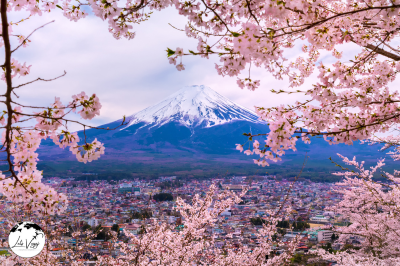
Mount Fuji (富士山, Fujisan) stands as Japan’s highest mountain at 3,776 meters (12,388 feet) and holds tremendous cultural and spiritual significance for the Japanese people. As the country’s most iconic natural landmark, this perfectly symmetrical volcanic cone has inspired artists, poets, and pilgrims for centuries.
Understanding Mount Fuji
Mount Fuji is an active stratovolcano that last erupted in 1707-1708. Despite its status as an active volcano, it’s considered at low risk of eruption and is monitored closely by geological authorities. The mountain straddles the boundary of Shizuoka and Yamanashi prefectures, about 100 kilometers southwest of Tokyo.
Fuji’s distinctive silhouette—with its nearly perfect conical shape—has made it not just a national symbol but a globally recognized image of Japan. In 2013, UNESCO recognized Mount Fuji as a World Cultural Heritage site, acknowledging its profound influence on Japanese culture, art, and spiritual practices.
Climbing Season and Access
The official climbing season runs from early July to early September. During this period, the mountain trails are free of snow, mountain huts are operational, and public transportation to the fifth stations (the starting points for climbs) is readily available. Climbing outside this season is extremely dangerous due to severe weather conditions and is strongly discouraged for all but the most experienced mountaineers.
There are four main trails to the summit:
- Yoshida Trail (most popular, from Yamanashi Prefecture)
- Subashiri Trail
- Gotemba Trail
- Fujinomiya Trail (shortest but steepest)
Most climbers begin their ascent from the fifth stations, which are accessible by bus or car. The Kawaguchiko Fifth Station on the Yoshida Trail is the most developed and accessible from Tokyo.
Best Viewing Points
Mount Fuji is famous for being “shy”—often hiding behind clouds. For the best chances of a clear view:
- Lake Kawaguchiko – The most accessible of the Fuji Five Lakes, offering stunning reflections of the mountain on clear days. The north shore provides particularly good views.
- Chureito Pagoda – Perhaps the most iconic view of Fuji, this five-story pagoda framed with cherry blossoms in spring creates the quintessential Japanese landscape photograph.
- Lake Motosuko – The view from the northern shore is featured on the 1,000-yen note. Early morning offers the best chance of clear visibility.
- Hakone – The view from Ashinoko (Lake Ashi) with traditional red torii gates is particularly striking.
- Miho no Matsubara – A pine-lined beach offering a unique coastal view of Fuji, famously depicted in many classic woodblock prints.
- Mount Tenjo – Accessible via the Kachi Kachi Ropeway from Kawaguchiko, providing an elevated perspective.
- Fujiyoshida Sengen Shrine – The starting point of the traditional pilgrimage route, offering a spiritual perspective with the mountain framed by shrine architecture.
The best time of year for viewing is during winter (December to February) when the air is clearest, especially early mornings. Spring and autumn offer beautiful contrasts with cherry blossoms or autumn foliage, while summer often has more cloud cover.
Nearby Attractions
Fuji Five Lakes Region
- Lake Kawaguchiko – The most developed lake area with museums, hot springs, and recreational activities
- Fuji-Q Highland – A major amusement park with some of Japan’s most thrilling roller coasters
- Oshino Hakkai – A set of eight ponds fed by snowmelt from Mount Fuji, known for extraordinarily clear water
- Saiko Iyashi no Sato Nenba – A reconstructed traditional village showcasing thatched-roof houses and traditional crafts
Hakone Area
- Owakudani – An active volcanic valley with sulfurous vents and the famous black eggs cooked in the hot springs
- Hakone Open-Air Museum – An outdoor museum featuring contemporary sculpture set against mountain backdrops
- Hakone Shrine – A centuries-old Shinto shrine with distinctive red torii gates partly submerged in Lake Ashi
- Hakone Tozan Railway – A scenic mountain railway featuring switchbacks and spectacular forest views
Cultural Experiences
- Kubota Itchiku Art Museum – Showcasing stunning kimonos with Mount Fuji motifs
- Yamanashi Prefectural Museum – Exploring the geological and cultural history of the region
- Traditional Onsen – Numerous hot springs in the region offer relaxation with Mount Fuji views
Practical Tips for Visitors
When to Visit
For climbing: July to early September
For photography: Clear winter mornings or during spring cherry blossom season
For avoiding crowds: Weekdays and outside Japanese holiday periods
For Transportation details visit How to get around Japan
Hiroshima
The Peace Memorial Park and Museum
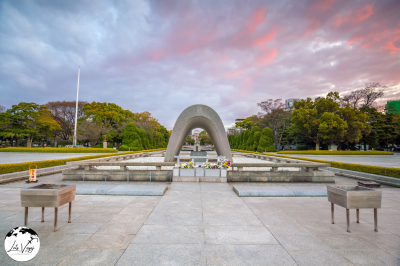
At the heart of Hiroshima’s identity lies the Peace Memorial Park, a space dedicated to the memory of bombing victims and to humanity’s hope for lasting peace. This expansive green space was once the bustling commercial and residential district at the hypocenter of the atomic blast.
The Atomic Bomb Dome (Genbaku Dome) stands as the most iconic structure in Hiroshima. This skeletal remnant of the former Prefectural Industrial Promotion Hall survived despite being almost directly beneath the explosion. UNESCO recognized it as a World Heritage Site in 1996 for its powerful testimony to the destructive forces humans have created.
The Peace Memorial Museum provides a comprehensive and deeply moving account of the bombing and its aftermath. Through photographs, artifacts, and personal testimonies, visitors gain insight into the human toll of nuclear warfare. The museum presents this difficult history not to assign blame but to educate about the imperative for nuclear disarmament.
Walking through the park, you’ll encounter numerous memorials, including the deeply affecting Children’s Peace Monument inspired by Sadako Sasaki, who folded paper cranes while hospitalized for radiation-induced leukemia. The Peace Bell, Cenotaph for Atomic Bomb Victims, and the Flame of Peace (designed to burn until all nuclear weapons are eliminated) create spaces for reflection and contemplation.
Address and Contact Information
- Full Address: 1-2 Nakajima-cho, Naka-ku, Hiroshima 730-0811, Japan
- Phone Number: +81-82-241-4004 (Hiroshima Peace Memorial Museum)
- Official Website: https://hpmmuseum.jp/?lang=eng
- Email: hpcf@pcf.city.hiroshima.jp
Opening Hours
- Peace Memorial Park: Open 24 hours (outdoor area)
- Peace Memorial Museum:
- 8:30 AM – 6:00 PM (March – July, September – November)
- 8:30 AM – 7:00 PM (August)
- 8:30 AM – 5:00 PM (December – February)
- Last entry: 30 minutes before closing
- Closed: December 30-31
- Cenotaph, A-Bomb Dome, and other outdoor monuments: Accessible 24 hours, illuminated at night
Getting to Hiroshima Peace Memorial Park
By Streetcar (Tram)
The most affordable and popular way to reach the Peace Park from Hiroshima Station:
- Lines and Routes:
- Line 2 (Hiroden): Headed for Miyajima-guchi
- Line 6 (Hiroden): Headed for Eba
- Stop Information:
- Board at Hiroshima Station tram stop (right outside the station)
- Get off at “Genbaku Dome-mae” (A-Bomb Dome) stop or “Hondori” stop
- Payment:
- Pay when exiting the tram
- IC cards (PASMO, Suica, ICOCA) accepted
- One-day streetcar passes available (¥700)
By Bus
Several bus routes connect Hiroshima Station to the Peace Park area:
- Hiroshima Bus:
- Route 24: Hiroshima Station → Peace Memorial Park
- Get off at “Heiwa-kinen-koen” (Peace Memorial Park) bus stop
- Travel time: Approximately 20 minutes
- Cost: ¥180-200 (depending on exact destination)
- Hiroshima Sightseeing Loop Bus “Meipuru-pu”:
- Dedicated tourist loop bus (orange buses)
- Stops at major attractions including Peace Memorial Park
- Departs from Hiroshima Station (south exit)
- Frequency: Every 30 minutes
- One-day pass: ¥400 (unlimited rides)
- Single ride: ¥200
By Water Bus (Seasonal)
During certain seasons, a water bus operates on the Motoyasu River:
- Hiroshima World Heritage Cruise:
- Operates from Peace Memorial Park to Miyajima
- Travel time: Approximately 45 minutes (one-way)
- Cost: ¥2,000 (one-way), ¥3,600 (round-trip)
- Seasonal operation (primarily April-November)
- Departs from Motoyasu River Peace Memorial Park Pier
By Car
If driving to the Peace Memorial Park:
- GPS Navigation:
- Enter “Hiroshima Peace Memorial Park” or coordinates: 34.3955° N, 132.4536° E
- Enter “Hiroshima Peace Memorial Park” or coordinates: 34.3955° N, 132.4536° E
- Parking Options:
- Peace Memorial Park Underground Parking
- Located directly beneath the Peace Memorial Park
- Capacity: 165 vehicles
- Hours: 7:00 AM – 10:00 PM
- Rate: ¥200 per 30 minutes (maximum ¥1,600/day)
- Heiwa Kinen Koen Parking Lot
- Located near the Peace Memorial Museum
- Capacity: 110 vehicles
- Hours: 8:00 AM – 10:00 PM
- Rate: ¥150 per 30 minutes (maximum ¥1,200/day)
- NTT Hiroshima Chuo Parking
- 5-minute walk from the Park
- Capacity: 200 vehicles
- Hours: 24 hours
- Rate: ¥200 per 30 minutes
- Hondori Shopping Area Parking
- Multiple facilities within 10-minute walk of the Park
- Rates vary (typically ¥200-300 per 30 minutes)
- Peace Memorial Park Underground Parking
Note that parking can be limited, especially during peak tourist seasons and on weekends.
Nearby Attractions
Within walking distance of the Peace Memorial Park:
- Hiroshima Castle (Hiroshima-jo)
- 15-minute walk from Peace Park
- Reconstructed historic castle with museum inside
- Beautiful grounds with cherry blossoms in spring
- Shukkei-en Garden
- 20-minute walk from Peace Park
- Traditional Japanese landscape garden dating back to 1620
- Tea houses and seasonal flowers
- Hiroshima Orizuru Tower
- 3-minute walk from A-Bomb Dome
- Observation deck with views of the city and Peace Park
- Interactive displays and paper crane folding activities
- Hondori Shopping Street
- 5-minute walk from Peace Park
- Covered shopping arcade with shops, restaurants, and cafes
- Local specialties and souvenirs
- Hiroshima Museum of Art
- 10-minute walk from Peace Park
- Collection of modern European and Japanese art
- Works by Picasso, Monet, Renoir, and others
- Hiroshima Prefectural Art Museum
- 15-minute walk from Peace Park
- Japanese and Asian art collections
- Regular special exhibitions
- Okonomimura
- 10-minute walk from Peace Park
- Food theme park featuring Hiroshima’s famous okonomiyaki (savory pancakes)
- Multiple small restaurants on several floors
Transportation Companies Serving the Area
- JR West (Japan Railways West)
- Operates Shinkansen and local trains to Hiroshima Station
- JR Pass valid on these services
- Hiroden (Hiroshima Electric Railway)
- Operates streetcar/tram network throughout Hiroshima
- Main provider of transport to Peace Memorial Park
- Hiroshima Bus Company
- Operates city buses and the Meipuru-pu sightseeing loop bus
- Bus services throughout Hiroshima and to surrounding areas
- Chugoku JR Bus
- Regional bus services throughout the wider Hiroshima prefecture
- Regional bus services throughout the wider Hiroshima prefecture
- Hiroshima Airport Limousine
- Direct bus services between Hiroshima Airport and downtown
- Direct bus services between Hiroshima Airport and downtown
- Aqua Net Hiroshima
- Operates water bus/ferry services on the Motoyasu River
- Seasonal services to Miyajima Island
- Hiroshima Taxi Association
- Multiple taxi companies operating throughout the city
- Available at ranks and by phone reservation
Hiroshima Castle
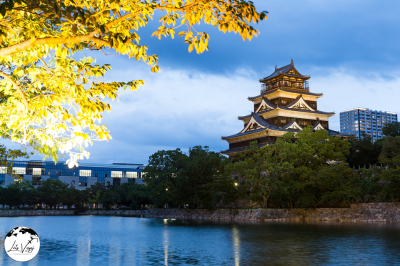
Originally built in the 1590s by the feudal lord Terumoto Mori, Hiroshima Castle was completely destroyed in the atomic bombing. The current structure, reconstructed in 1958, serves as a museum of Hiroshima’s pre-war history. From the top floor, visitors enjoy panoramic views of the surrounding city.
The castle grounds, planted with hundreds of cherry trees, transform into one of Hiroshima’s most popular hanami (cherry blossom viewing) spots each spring. The castle’s nickname, “Carp Castle” (Rijō), references the fish that have become symbols of the city and its beloved baseball team.
Address and Contact Information
- Full Address: 21-1 Motomachi, Naka-ku, Hiroshima 730-0011, Japan
- Phone Number: +81-82-221-7512
- Official Website: https://www.rijo-castle.jp/
- Email: info@rijo-castle.jp
Opening Hours
- Castle Grounds: Open 24 hours (accessible anytime)
- Castle Tower/Main Keep (Museum):
- 9:00 AM – 6:00 PM (March – November)
- 9:00 AM – 5:00 PM (December – February)
- Last entry: 30 minutes before closing
- Closed: December 29-31
- Ninomaru (Second Bailey):
- 9:00 AM – 6:00 PM (March – November)
- 9:00 AM – 5:00 PM (December – February)
Getting to Hiroshima Castle
From Hiroshima Station to Hiroshima Castle
By Streetcar (Tram)
- Lines and Routes:
- Line 1 (Hiroden): Headed for Hiroshima Port (Ujina)
- Line 2 (Hiroden): Headed for Miyajima-guchi
- Line 6 (Hiroden): Headed for Eba
- Stop Information:
- Board at Hiroshima Station tram stop (outside the station)
- Get off at “Kamiya-cho-nishi” or “Kamiya-cho-higashi” stop
- Walk approximately 10 minutes to the castle
By Sightseeing Loop Bus “Meipuru-pu”
This tourist-friendly loop bus is convenient for visiting multiple attractions:
- Orange Route:
- Departs from Hiroshima Station (south exit)
- Stops at “Hiroshima Castle” (dedicated stop)
- Travel time: Approximately 15 minutes from Hiroshima Station
- Frequency: Every 30 minutes
- One-day pass: ¥400 (unlimited rides)
- Single ride: ¥200
By City Bus
Regular city buses connect Hiroshima Station to the castle area:
- Hiroshima Bus:
- Routes 12, 13, or 21
- Get off at “Kamiya-cho” bus stop
- Walk approximately 10 minutes to the castle
By Car
If driving to Hiroshima Castle:
- GPS Navigation:
- Enter “Hiroshima Castle” or coordinates: 34.4026° N, 132.4590° E
- Enter “Hiroshima Castle” or coordinates: 34.4026° N, 132.4590° E
- Parking Options:
- Hiroshima Castle Parking Lot
- Located within the castle grounds
- Capacity: 85 vehicles
- Hours: 7:00 AM – 11:00 PM
- Rate: ¥200 per hour (maximum ¥1,500/day)
- Motomachi Municipal Parking Lot
- Located 5-minute walk from the castle entrance
- Capacity: 125 vehicles
- Hours: 24 hours
- Rate: ¥170 per 30 minutes (maximum ¥1,700/day)
- NTT Hiroshima Chuo Parking
- 7-minute walk from the castle
- Capacity: 200 vehicles
- Hours: 24 hours
- Rate: ¥200 per 30 minutes
- Kamiya-cho Shareo Underground Parking
- 10-minute walk from the castle
- Capacity: 460 vehicles
- Hours: 7:00 AM – 11:00 PM
- Rate: ¥180 per 30 minutes (maximum ¥1,800/day)
- Hiroshima Castle Parking Lot
Nearby Attractions
Within walking distance of Hiroshima Castle:
- Hiroshima Peace Memorial Park and A-Bomb Dome
- 15-minute walk from the castle
- UNESCO World Heritage Site
- Museum and monuments dedicated to the atomic bombing
- Shukkei-en Garden
- 10-minute walk from the castle
- Traditional Japanese landscape garden dating back to 1620
- Tea houses and seasonal flowers
- Hiroshima Museum of Art
- 8-minute walk from the castle
- Collection of modern European and Japanese art
- Works by Picasso, Monet, Renoir, and others
- Hiroshima Prefectural Art Museum
- 5-minute walk from the castle
- Japanese and Asian art collections
- Regular special exhibitions
- Hiroshima Central Park (Chuo Koen)
- Adjacent to the castle grounds
- Popular cherry blossom viewing spot in spring
- Children’s playground and open spaces
- Kamiya-cho Shopping Area
- 10-minute walk from the castle
- Modern shopping area with department stores and boutiques
- Various restaurants and cafes
- Hondori Shopping Street
- 15-minute walk from the castle
- Covered shopping arcade with shops, restaurants, and cafes
- Local specialties and souvenirs
Shukkeien Garden
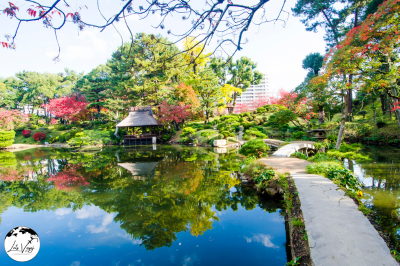
Just a short walk from Hiroshima Station lies Shukkeien, a traditional Japanese landscape garden whose name means “shrunken-scenery garden.” Created in 1620 for a local feudal lord, the garden employs careful landscaping techniques to reproduce miniature versions of natural formations—valleys, mountains, and forests—around a central pond.
The garden suffered extensive damage in 1945 but was meticulously restored. Today, it offers a tranquil counterpoint to urban life, with tea houses where visitors can pause for matcha and seasonal wagashi (traditional sweets) while contemplating the carefully composed vistas.
Miyajima Island
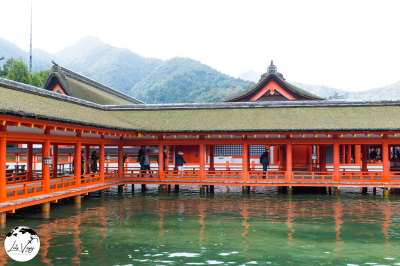
No visit to Hiroshima would be complete without a day trip to Miyajima (officially Itsukushima), an island in Hiroshima Bay considered one of Japan’s three most scenic views. The 45-minute journey includes a short ferry ride that builds anticipation for the island’s natural and cultural treasures.
The Itsukushima Shrine and its offshore “floating” torii gate create one of Japan’s most recognizable images. During high tide, the vermillion structures appear to float on water; at low tide, visitors can walk out to the base of the massive gate. The shrine complex, built over water on piers, dates back to the 12th century and exemplifies Heian-period shrine architecture.
Mount Misen, the island’s highest peak at 535 meters, can be ascended via ropeway or hiking trails. At the summit, panoramic views extend across the Seto Inland Sea, and a sacred flame—reportedly burning continuously since the 8th century—connects visitors to the spiritual traditions that have shaped this island sanctuary.
Address and Contact Information
- Official Name: Itsukushima (厳島), commonly known as Miyajima (宮島)
- Address: Miyajima-cho, Hatsukaichi City, Hiroshima Prefecture 739-0588, Japan
- Tourist Information Center Phone: +81-829-44-2011
- Email: miyajima-info@miyajima-wch.jp
Island Access Hours
- Island: Accessible 24 hours (inhabited island)
- Itsukushima Shrine:
- 6:30 AM – 6:00 PM (March – October)
- 6:30 AM – 5:30 PM (November – February)
- Last entry: 30 minutes before closing
- Mt. Misen Ropeway:
- 9:00 AM – 5:00 PM (extended during peak seasons)
- May close during adverse weather conditions
Getting to Miyajima Island
Visiting Miyajima requires a two-step journey: first to Miyajimaguchi (the mainland port), then a ferry crossing to the island itself.
Step 1: Reaching Miyajimaguchi Port
By Train from Hiroshima Station
- JR Sanyo Line (Local Train):
- Direct train from Hiroshima Station to Miyajimaguchi Station
- The station is a 5-minute walk to the ferry terminal
- JR Sanyo Shinkansen + JR Sanyo Line:
- Take Shinkansen to Iwakuni Station (if coming from west)
- Transfer to JR Sanyo Line to Miyajimaguchi Station
- Travel time: Varies based on connections
By Streetcar (Tram) from Hiroshima City
- Hiroden Streetcar Line 2:
- Board at Hiroshima Station or downtown Hiroshima
- Ride all the way to the terminus at Miyajimaguchi Station
By Direct Bus from Hiroshima
- Hiroshima Bus:
- Route 3-1: Hiroshima Bus Center → Miyajimaguchi
- Route 3-1: Hiroshima Bus Center → Miyajimaguchi
By Car to Miyajimaguchi
- Driving Directions:
- From Hiroshima City: Take Route 2 westbound
- Follow signs to Miyajimaguchi
- Travel time: Approximately 40 minutes from central Hiroshima
- Several parking options available (see “Parking Information” below)
Step 2: Ferry to Miyajima Island
After reaching Miyajimaguchi, you must take a ferry to cross to the island:
- JR Ferry:
- Departs from Miyajimaguchi Ferry Terminal
- Travel time: 10 minutes
- Cost: ¥190 (one way), covered by Japan Rail Pass
- Frequency: Every 15 minutes (first departure around 6:30 AM, last return around 10:30 PM)
- Matsudai Ferry:
- Operates from the same terminal as JR Ferry
- Travel time: 10 minutes
- Cost: ¥190 (one way), not covered by Japan Rail Pass
- Frequency: Every 15 minutes, alternating with JR Ferry
Direct Sea Routes to Miyajima
- World Heritage Sea Route:
- Direct high-speed boat from Hiroshima Peace Park to Miyajima
- Operated by Aqua Net Hiroshima
- Travel time: 45 minutes
- Cost: ¥2,200 (one way), ¥4,000 (round trip)
- Frequency: 1-5 departures daily (seasonal)
- Scenic route passing the A-Bomb Dome
- Miyajima-Kure-Etajima Ferry:
- Connects Miyajima with Kure City and Etajima Island
- Limited schedule (mostly weekends and holidays)
- Travel time: 60-90 minutes (depending on route)
- Cost: Varies by destination
Parking Information at Miyajimaguchi
As private vehicles are not permitted on Miyajima Island, visitors driving must park at Miyajimaguchi:
- Miyajimaguchi Ferry Terminal Parking:
- Official parking located directly next to the ferry terminal
- Capacity: 200 vehicles
- Cost: ¥300/hour, maximum ¥1,500/day
- Often fills up by mid-morning on weekends and holidays
- Operated by Hiroshima Prefecture
- JR Miyajimaguchi Station Parking:
- Next to the JR station
- Capacity: 120 vehicles
- Cost: ¥200/hour, maximum ¥1,200/day
- 5-minute walk to ferry terminal
- Miyajima Park & Ride Parking:
- Located approximately 1km from the ferry terminal
- Capacity: 500 vehicles
- Cost: ¥500/day (flat rate)
- Free shuttle bus to ferry terminal
- Recommended during peak seasons
- Private Parking Lots:
- Several private lots scattered around Miyajimaguchi area
- Cost: ¥100-200/hour, maximum ¥1,000-1,500/day
- Various distances from ferry terminal
Getting Around Miyajima Island
Once on the island, transportation options include:
- Walking:
- Most attractions are within walking distance
- The main shrine area is a 10-minute walk from the ferry terminal
- Flat, well-maintained paths along the waterfront
- Comfortable walking shoes recommended
- Mt. Misen Ropeway:
- Cable car service to Mt. Misen (island’s highest peak)
- Station is a 30-minute walk from the ferry terminal
- Operating hours: 9:00 AM – 5:00 PM (last ascent 4:30 PM)
- Cost: ¥1,800 (round trip), ¥1,000 (one way)
- Travel time: 20 minutes (including transfer between ropeways)
- Taxi:
- Limited service on the island
- Available primarily for elderly or disabled visitors
- Must be reserved in advance during off-peak seasons
Nearby Attractions on Miyajima Island
- Itsukushima Shrine:
- UNESCO World Heritage Site
- Famous “floating” torii gate in the sea
- Entrance fee: ¥300 adults, ¥150 children
- Main attraction on the island
- Daisho-in Temple:
- Important Shingon Buddhist temple
- 15-minute walk from the ferry terminal
- Free admission (donations appreciated)
- Beautiful statues and spiritual atmosphere
- Mt. Misen:
- Island’s highest peak (535m)
- Accessible by ropeway or hiking trails
- Primeval forest with rare flora and fauna
- Historic Buddhist halls and prayer sites
- Spectacular views of the Seto Inland Sea
- Miyajima History and Folklore Museum:
- Exhibits on island traditions and culture
- Entrance fee: ¥300
- Located near the shopping street
- Momijidani Park:
- Beautiful maple leaf valley
- Spectacular in autumn (November)
- Starting point for several hiking trails
- Free admission
- Machiya Street (Omotesando):
- Traditional shopping street
- Famous for Miyajima specialties
- Numerous souvenir shops and restaurants
- Historic architecture
- Five-Story Pagoda (Gojunoto):
- Built in 1407
- Visible from many parts of the island
- Particularly beautiful when illuminated at night
Nara
Nara Park and Its Treasures
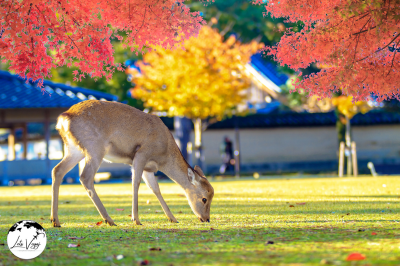
At the heart of Nara’s tourism appeal lies Nara Park (Nara Koen), a sprawling green space of approximately 660 hectares that houses several of Japan’s most significant historical sites. The park is famously home to over 1,200 wild sika deer that have lived in the area since ancient times and were considered divine messengers of the gods. Today, these approachable deer have become symbolic of Nara, freely roaming the park and interacting with visitors who can purchase special “shika senbei” (deer crackers) to feed them.
Basic Information
Address
Nara Park 630-8211 Nara Prefecture, Nara, Zoshicho Japan
Opening Hours
Open 24 hours, year-round (Note: Some facilities within the park have different operating hours)
Contact Information
Phone: +81 742-22-0375
Website: https://www.visitnara.jp/destinations/area/nara-park/
Transportation Options
By Bus
- From JR Nara Station:
- City Loop Bus (yellow): Get off at “Todaiji Daibutsuden” or “Kasuga Taisha” stops
- City Bus #2: To Kasuga Taisha Honden (15 minutes)
- From Kintetsu Nara Station:
- City Loop Bus (yellow): Get off at “Todaiji Daibutsuden” or “Kasuga Taisha” stops
- Walking is also convenient (15-20 minutes)
By Car
- Take Expressway to Nara IC, then follow signs to Nara Park
- Drive time from Osaka: approximately 1 hour
- Drive time from Kyoto: approximately 1 hour
Parking Options
- Nara Park Parking Lot
- Fee: ¥500-1000/day depending on vehicle size
- 300 spaces available
- Todaiji Temple Parking
- Fee: ¥1000/day
- 100 spaces available
- Kasuga Taisha Shrine Parking
- Fee: ¥800/day
- 150 spaces available
- Nara National Museum Parking
- Fee: ¥700/day
- 80 spaces available
Transportation Companies
Buses
- Nara Kotsu Bus Lines: http://www.narakotsu.co.jp/
- JR Bus: https://www.westjr.co.jp/
Taxis
- Nara Taxi: +81 742-22-5577
- MK Taxi Nara: +81 742-33-0300
Rental Bicycles
- Nara Rent-a-Cycle: Near JR Nara Station, ¥1000/day
- Kintetsu Rent-a-Cycle: Near Kintetsu Nara Station, ¥800/day
Nearby Attractions
- Todaiji Temple (UNESCO World Heritage site) – 5 minute walk
- Kasuga Taisha Shrine (UNESCO World Heritage site) – 10 minute walk
- Nara National Museum – 5 minute walk
- Kofukuji Temple (UNESCO World Heritage site) – 15 minute walk
- Isuien Garden – 10 minute walk
- Yoshikien Garden – 10 minute walk
- Naramachi (historic merchant district) – 20 minute walk
Todai-ji Temple
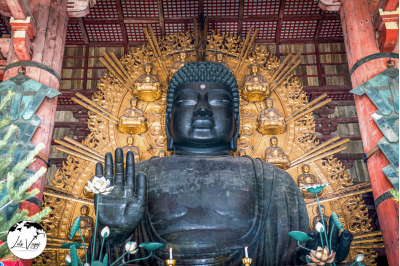
Todai-ji stands as the most impressive structure in Nara and houses Japan’s largest bronze Buddha statue (Daibutsu). The current temple building, while enormous at 57 meters long and 50 meters wide, is actually only two-thirds the size of the original 8th-century structure. The Great Buddha Hall (Daibutsu-den) ranks among the world’s largest wooden buildings despite its reduced dimensions.
The seated Buddha figure inside rises 15 meters and represents Vairocana, the cosmic Buddha believed to illuminate the universe with spiritual wisdom. The statue contains approximately 437 tons of bronze and 130 kg of gold. Visitors often attempt to crawl through a hole in one of the supporting wooden pillars said to be the same size as the Buddha’s nostril—a feat believed to bring good fortune to those who can pass through.
Behind the Great Buddha, you’ll find a wooden pillar with a hole at its base. According to tradition, those who can squeeze through this opening will achieve enlightenment in their next life. This attracts lines of children and slender adults hoping to secure their spiritual future.
Kasuga Taisha Shrine
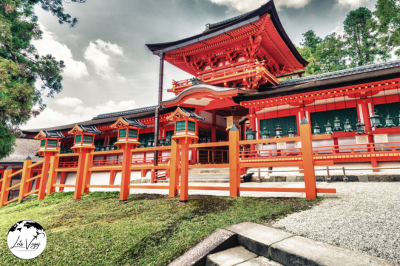
Kasuga Taisha, founded in 768 CE by the powerful Fujiwara clan, represents classic Shinto architectural style with its vermillion columns and decorative bronze lanterns. The approach to the shrine through a forest path lined with stone lanterns creates a deeply atmospheric experience, especially during the Setsubun Mantoro (February) and Obon Mantoro (August) festivals when these lanterns are lit.
The shrine is renowned for its thousands of bronze and stone lanterns, donated over centuries by worshippers. The inner shrine features wonderfully preserved buildings with architectural elements dating back to the 12th century.
Kofuku-ji Temple
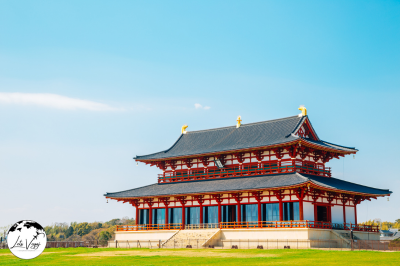
This temple complex, established in 710, served as the Fujiwara clan’s family temple and once comprised over 150 buildings. While many structures have been lost over time, several important buildings remain, including the five-story pagoda (Japan’s second tallest at 50 meters) and the three-story pagoda. The recently reconstructed Central Golden Hall (Chukondo) houses important Buddhist statues including a significant Yakushi Buddha.
The adjacent National Treasure Museum displays masterpieces of Buddhist art, most notably the six Kannon statues representing different manifestations of the deity of compassion and the famed dry-lacquer statue of Ashura, with its haunting expression and six arms.
Yakushi-ji Temple
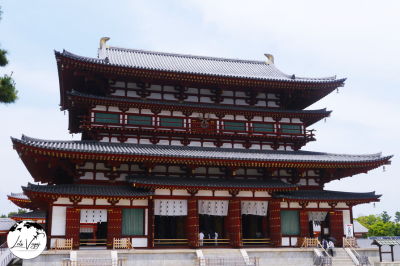
Located in southern Nara, this temple represents the pinnacle of Hakuho Buddhist architecture. The East Pagoda, dating from the original 8th-century construction, is considered one of Japan’s finest pagodas with its graceful silhouette and subtle curves that create an impression of upward movement. The temple’s Yakushi Triad—statues of the healing Buddha flanked by two bodhisattvas—exemplifies the technical and artistic heights of Nara period sculpture.
Osaka
Universal Studios Japan

Universal Studios Japan (USJ) stands as one of Osaka’s premier attractions and has become a major destination not just for Japanese visitors but for tourists throughout Asia. Opened in 2001 as the first Universal Studios theme park outside the United States, USJ has consistently ranked among Japan’s most visited tourist sites.
The Park Experience
Universal Studios Japan offers a blend of Hollywood entertainment and uniquely Japanese adaptations across nine themed areas:
Super Nintendo World opened in 2021 as the world’s first Nintendo-themed amusement park area, creating an immersive recreation of the Mario universe. Visitors can participate in interactive challenges using special wristbands (Power-Up Bands), ride attractions like Mario Kart: Koopa’s Challenge using augmented reality technology, and dine at themed restaurants serving mushroom-shaped foods. The attention to detail in this area has set new standards for immersive theme park experiences.
The Wizarding World of Harry Potter recreates Hogwarts Castle and Hogsmeade Village with extraordinary fidelity to the film series. The signature attraction, Harry Potter and the Forbidden Journey, combines physical sets with projection technology for a groundbreaking ride experience. The area features shops selling wands, butterbeer, and other franchise items in meticulously themed environments.
Minion Park celebrates the popular characters from the Despicable Me franchise with family-friendly attractions and extensive merchandising opportunities. The bright yellow theming makes this area particularly appealing to younger visitors.
Other areas include Hollywood, New York, San Francisco, Jurassic Park, Amity Village, and Universal Wonderland, each offering themed attractions, restaurants, and shopping opportunities.
Seasonal Events
Universal Studios Japan has distinguished itself through elaborate seasonal events that draw repeat visitors:
Halloween Horror Nights (September-October) transforms sections of the park into haunted zones with costumed performers creating Japan’s largest horror event. Unlike American haunted attractions, the Japanese version often incorporates elements from Japanese horror traditions alongside Universal’s classic monster properties.
Christmas Celebration (November-January) features illuminations, parades, and seasonal entertainment with a distinctly Japanese interpretation of Western Christmas traditions.
Cool Japan is a rotating series of limited-time attractions featuring popular Japanese properties like Monster Hunter, Detective Conan, Attack on Titan, and other anime/manga franchises. These temporary attractions demonstrate USJ’s understanding of the domestic market and ability to blend Hollywood entertainment with Japanese pop culture.
Practical Information
Tickets: Standard one-day passes start around ¥8,400 for adults, with various upgrade options including Express Passes that reduce waiting times for popular attractions. During peak periods like national holidays, the park may reach capacity, making advance ticket purchase essential.
Getting to Universal Studios Japan, Osaka
Address
Universal Studios Japan 2-1-33 Sakurajima, Konohana Ward Osaka, 554-0031 Japan
Opening Hours
- Generally 9:00 AM to 7:00 PM
- Hours vary by season, holidays, and special events
- Extended hours during peak seasons and holidays
Contact Information
- Phone: +81 570-20-0606
- Website: https://www.usj.co.jp/web/en/us
- Customer service email: info@usj.co.jp
Transportation Options
By Train
- JR Universal City Station (direct access to USJ)
- From Osaka Station: JR Osaka Loop Line to Nishikujo Station, then transfer to JR Yumesaki Line (about 20 minutes total)
- From Shin-Osaka Station: JR Tokaido Main Line to Osaka Station, then follow route above (about 30 minutes total)
- From Kyoto: JR Special Rapid Service to Osaka Station, then follow route above (about 75 minutes total)
- From Kansai International Airport: JR Airport Express Haruka to Tennoji Station, transfer to JR Loop Line to Nishikujo, then JR Yumesaki Line (about 70 minutes total)
- Direct Trains
- JR Special Rapid Service “Universal City” runs directly from:
- Kyoto Station (70 minutes)
- Shin-Osaka Station (25 minutes)
- Osaka Station (15 minutes)
- Limited express trains available during peak seasons
- JR Special Rapid Service “Universal City” runs directly from:
By Subway
- From Umeda: Osaka Metro Midosuji Line to Honmachi, transfer to Chuo Line to Kujo, then walk to JR Kujo Station and take JR Yumesaki Line (about 40 minutes)
By Bus
- From Osaka Station: Direct buses to USJ (25-30 minutes)
- From Namba: Direct buses to USJ (30-35 minutes)
- From Kansai Airport: Airport Limousine Bus (about 65 minutes)
By Ferry
- Captain Line Ferry: From Kaiyukan Station (Osaka Aquarium) to Universal City Port (10 minutes)
- Runs every 10-15 minutes
- Cost: ¥700 one-way for adults
Parking Options
- Official USJ Parking
- Fee: Weekdays ¥2,500/day, Weekends/Holidays ¥3,000/day
- Capacity: 2,720 vehicles
- Opens 30 minutes before park opening
- Universal City Walk Parking
- Fee: ¥600/hour, maximum ¥2,400/day
- Capacity: 900 vehicles
- Sakurajima Parking
- Fee: ¥1,500-2,000/day
- About 10-minute walk to USJ entrance
- Capacity: 500 vehicles
- Konohana-ku Municipal Parking
- Fee: ¥1,000-1,500/day
- About 15-minute walk to USJ entrance
- Capacity: 300 vehicles
Transportation Companies
Buses
- Airport Limousine: https://www.kate.co.jp/en/
- Willer Express: https://willerexpress.com/en/
Metro(subway)
- Osaka Metro: https://www.osakametro.co.jp/en/
Taxis
- MK Taxi: +81 6-6928-4321
- Osaka Taxi: +81 6-6451-5111
Nearby Attractions
- Universal City Walk Osaka – Shopping and dining complex (adjacent to USJ)
- Osaka Aquarium Kaiyukan – One of the world’s largest aquariums (15 minutes by ferry)
- Tempozan Ferris Wheel – Near Kaiyukan (15 minutes by ferry)
- Tempozan Harbor Village – Shopping mall (15 minutes by ferry)
- Osaka Bay Area – Various attractions (20-30 minutes)
- Osaka Castle – Historic landmark (30 minutes by train)
- Dotonbori – Famous entertainment district (30 minutes by train)
Osaka Castle
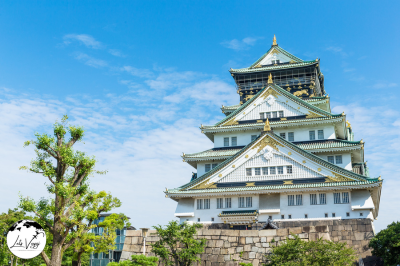
Although the current structure is a concrete reconstruction from 1931 (with interior renovations in 1997), Osaka Castle remains the city’s most recognizable landmark. The castle’s museum chronicles the life of Toyotomi Hideyoshi and the tumultuous period of Japanese unification. The surrounding park, planted with approximately 4,000 cherry trees, becomes one of Japan’s most popular hanami (cherry blossom viewing) spots each spring.
For the best experience, approach the castle through Nishinomaru Garden on the western side, where preserved sections of stone walls and moats provide historical context. The eighth-floor observation deck offers panoramic views of the surrounding city. History enthusiasts should note that while little of the original 16th-century structure remains, the massive stone foundations offer authentic testimony to the engineering achievements of the period.
Basic Information
Address
Osaka Castle 1-1 Osakajo, Chuo Ward Osaka, 540-0002 Japan
Opening Hours
- Castle Park: Open 24 hours, free admission
- Castle Tower (Main Keep): 9:00 AM to 5:00 PM (last entry 4:30 PM)
- Closed: December 28 to January 1
- Extended hours during cherry blossom season and special events
Contact Information
- Phone: +81 6-6941-3044
- Website: https://www.osakacastle.net/english/
- Email: info@osakacastle.net
Transportation Options
By Train/Subway
- Tanimachi 4-chome Station (closest to southwest castle entrance)
- Tanimachi Line and Chuo Line
- 5-10 minute walk to castle grounds
- Osakajokoen Station (JR Loop Line, closest to east gate)
- 10 minute walk to castle
- From Osaka/Umeda Station: JR Loop Line (15 minutes)
- From Shin-Osaka Station: JR Line to Osaka Station, then Loop Line (25 minutes)
- Morinomiya Station (closest to south entrance)
- JR Loop Line and Nagahori Tsurumi-ryokuchi Line
- 10 minute walk to castle grounds
- Osaka Business Park Station
- Nagahori Tsurumi-ryokuchi Line
- 15 minute walk to the castle
By Bus
- From Osaka Station: City Bus #88 to “Osakajo Koen” stop
- From Namba: City Bus #62 to “Osakajo Koen” stop
- Tourist Loop Bus “Osaka Wonder Loop” stops at Osaka Castle
By Boat
- Aqua-Liner Sightseeing Cruise from Osakajo Pier (near Temmabashi)
- 60-minute cruise around the castle moat
- Operates 10:00 AM to 4:00 PM (varies by season)
- Fee: ¥1,700 adults, ¥800 children
Parking Options
- Osaka Castle Park Parking (Official)
- Fee: ¥300/hour, maximum ¥1,500/day
- Capacity: 300 vehicles
- Located near the Morinomiya entrance
- Osaka Castle Nishinomaru Garden Parking
- Fee: ¥500/hour, maximum ¥1,500/day
- Capacity: 170 vehicles
- Located near the west entrance
- NPC Osakajo Parking
- Fee: ¥200/30 minutes, maximum ¥1,800/day
- Capacity: 200 vehicles
- 5-minute walk to castle entrance
- Osaka Business Park Underground Parking
- Fee: ¥300/hour
- Capacity: 500 vehicles
- 15-minute walk to castle
Nearby Attractions
- Osaka Museum of History – 5-minute walk from southwest entrance
- NHK Osaka Broadcasting Station – 10-minute walk from southwest entrance
- Osaka Business Park – 15-minute walk from south entrance
- Osaka-jo Hall (concert venue) – Inside castle grounds
- Tenmabashi (shopping district) – 15-minute walk from north entrance
- Osaka Castle Park – Surrounding the castle (plum grove, cherry trees, etc.)
- Hokoku Shrine – Inside castle grounds
- Toyokuni Shrine – Inside castle grounds
- Osaka International Peace Center – 15-minute walk from the castle
Dotonbori
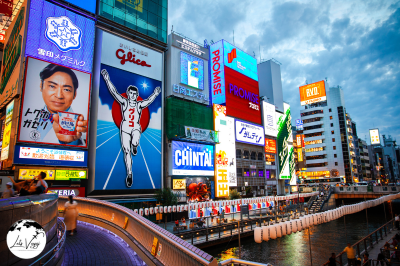
This neon-saturated entertainment district along the canal of the same name epitomizes Osaka’s reputation for revelry and indulgence. Giant mechanical crabs, pufferfish, and other dramatic signage create a sensory overload that reaches its peak after sunset when the canal waters reflect countless illuminated billboards.
Food stands alongside the pedestrianized Dotonbori Street serve Osaka specialties like takoyaki (octopus balls) and okonomiyaki (savory pancakes). The Glico Running Man sign—featuring an athlete with arms raised in triumph—has served as Osaka’s unofficial symbol since 1935, making it a popular photo spot for visitors.
Beyond food, Dotonbori offers shopping, theaters, and people-watching opportunities unmatched elsewhere in Japan. The nearby Hozenji Yokocho alley provides atmospheric contrast with its stone-paved paths and traditional restaurants illuminated by paper lanterns.
Basic Information
Address
Dotonbori Chuo Ward, Osaka Osaka Prefecture, 542-0071 Japan (Main area runs along the Dotonbori Canal between Nipponbashi and Mido-suji streets)
Opening Hours
- Open-air area with 24/7 access
- Most shops and restaurants: 11:00 AM to 10:00 PM
- Nightlife venues and some restaurants: open until midnight or later
- Hours vary by individual establishment
Contact Information
- Osaka Tourism Bureau: +81 6-6282-5900
- Website: https://osaka-info.jp/en/
- Minami (Namba) Tourist Information Center: +81 6-6631-9100
Transportation Options
By Subway
- Namba Station (most convenient)
- Served by: Midosuji Line, Yotsubashi Line, Sennichimae Line
- 5-minute walk to Dotonbori
- From Osaka/Umeda: Midosuji Line (10 minutes)
- From Shin-Osaka: Midosuji Line (15-20 minutes)
- Nipponbashi Station
- Served by: Sennichimae Line, Sakaisuji Line
- 5-minute walk to eastern end of Dotonbori
- Shinsaibashi Station
- Served by: Midosuji Line, Nagahori Tsurumi-ryokuchi Line
- 7-minute walk to western end of Dotonbori
By Train
- Nankai Namba Station
- Direct trains from Kansai International Airport (about 45 minutes)
- 7-minute walk to Dotonbori
- Kintetsu Namba Station
- Connected to JR and subway Namba stations
- 5-minute walk to Dotonbori
- JR Namba Station
- Served by: JR Yamatoji Line
- 10-minute walk to Dotonbori
By Bus
- From Osaka/Umeda: City Bus routes #46, #88 to “Namba” stop
- From Osaka Castle: City Bus route #62 to “Namba” stop
- From Kansai Airport: Airport Limousine Bus to OCAT (Namba), then 10-minute walk
Parking Options
- Dotonbori Parking (NPC)
- Fee: ¥400/30 minutes, maximum ¥2,000/day
- Capacity: 150 vehicles
- Located near Ebisubashi Bridge
- Namba Parks Parking
- Fee: ¥300/30 minutes, maximum ¥2,500/day
- Capacity: 1,200 vehicles
- 10-minute walk to Dotonbori
- Takashimaya Parking
- Fee: ¥600/hour, maximum ¥3,000/day
- Capacity: 500 vehicles
- 7-minute walk to Dotonbori
- Parco Parking
- Fee: ¥400/30 minutes
- Validation discounts available with shopping
- 5-minute walk to Dotonbori
Nearby Attractions
- Shinsaibashi Shopping Arcade – Connected to western end (5-minute walk)
- Glico Running Man Sign – Iconic neon sign at Ebisubashi Bridge
- Hozenji Yokocho – Historic alley with traditional shops and restaurants (3-minute walk)
- Kuromon Ichiba Market – Famous food market (10-minute walk)
- Namba Grand Kagetsu (NGK) – Famous comedy theater (5-minute walk)
- Amerikamura (American Village) – Youth fashion district (10-minute walk)
- Den Den Town – Electronics and anime district (15-minute walk)
- Namba Parks – Modern shopping complex with rooftop garden (10-minute walk)
- Sennichimae Doguyasuji – Shopping street with kitchenware and restaurant supplies (7-minute walk)
- Osaka Shochikuza Theater – Traditional kabuki theater (5-minute walk)
Shinsekai
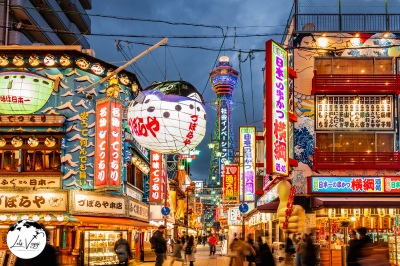
This retro district surrounding the Tsutenkaku Tower offers a glimpse of early 20th-century Osaka. Built in 1912 and modeled after Paris (northern section) and Coney Island (southern section), Shinsekai has maintained its working-class character while developing a nostalgic appeal for visitors seeking “old Osaka” atmosphere.
The area’s centerpiece is Tsutenkaku, a 103-meter tower whose name means “reaching heaven.” First built in 1912 and reconstructed in 1956, the tower houses the Billiken statue—a grinning charm figure whose feet visitors rub for good luck. The surrounding streets specialize in kushikatsu (deep-fried skewered foods), served in modest establishments with unchanged recipes and décor from decades past.
While Shinsekai developed a somewhat rough reputation in postwar years, today it offers safe exploration of a neighborhood that feels frozen in time, with mid-century signage, retro gaming parlors, and unpretentious eateries where locals gather for affordable meals and conversation.
Basic Information
Address
Shinsekai Ebisuhigashi, Naniwa Ward Osaka, 556-0002 Japan (Centered around Tsutenkaku Tower)
Opening Hours
- Open-air area with 24/7 access
- Most shops and restaurants: 11:00 AM to 10:00 PM
- Some restaurants open early for breakfast from 7:00 AM
- Hours vary by individual establishment
- Tsutenkaku Tower: 9:00 AM to 9:00 PM (last entry 8:30 PM)
Contact Information
- Osaka Tourism Bureau: +81 6-6282-5900
- Tsutenkaku Tower: +81 6-6641-9555
- Website: https://www.tsutenkaku.co.jp/
- Shinsekai Shopping Association: +81 6-6643-3536
Transportation Options
By Subway
- Ebisucho Station (most convenient)
- Served by: Sakaisuji Line
- Exit 3 leads directly to Shinsekai (1-minute walk)
- From Osaka/Umeda: Take Midosuji Line to Dobutsuen-mae, transfer to Sakaisuji Line (20 minutes total)
- Dobutsuen-mae Station
- Served by: Midosuji Line, Sakaisuji Line
- 5-minute walk to northern end of Shinsekai
- From Shin-Osaka: Take Midosuji Line directly (20-25 minutes)
- Shin-Imamiya Station
- Served by: JR Loop Line, JR Yamatoji Line
- 7-minute walk to Tsutenkaku Tower
- From Osaka/Umeda: JR Loop Line (15 minutes)
By Train
- JR Shin-Imamiya Station
- Served by: JR Loop Line, JR Yamatoji Line
- 7-minute walk to Shinsekai
- Direct access from Kansai Airport via JR trains (change at Tennoji, 55 minutes total)
- Nankai Shin-Imamiya Station
- Adjacent to JR Shin-Imamiya Station
- Nankai Line from Kansai Airport to Shin-Imamiya (50 minutes)
By Bus
- From Namba: City Bus #46 to “Ebisugawa Nichome” stop
- From Osaka/Umeda: City Bus #62 to “Dobutsuen-mae” stop
- From Tennoji: City Bus #103 to “Shinsekai” stop
Parking Options
- Tsutenkaku Parking
- Fee: ¥300/30 minutes, maximum ¥1,500/day
- Capacity: 80 vehicles
- Located directly by Tsutenkaku Tower
- Times Parking Shinsekai
- Fee: ¥200/30 minutes, maximum ¥1,200/day
- Capacity: 50 vehicles
- Located on the east side of Shinsekai
- Park 24 Shinsekai
- Fee: ¥300/hour, maximum ¥1,500/day
- Capacity: 40 vehicles
- 3-minute walk to Shinsekai
- Spa World Parking
- Fee: ¥300/hour (free for Spa World customers)
- Capacity: 200 vehicles
- 5-minute walk to Shinsekai
Nearby Attractions
- Tsutenkaku Tower – Iconic landmark at the center of Shinsekai (150m tall)
- Spa World – Large public bath complex (5-minute walk)
- Tennoji Zoo – One of Japan’s oldest zoos (10-minute walk)
- Tennoji Park – Large urban park (10-minute walk)
- Abeno Harukas – Japan’s tallest skyscraper (15-minute walk)
- Shitennoji Temple – One of Japan’s oldest temples (15-minute walk)
- Tennoji Station Area – Major shopping and transportation hub (15-minute walk)
- JAN JAN Yokocho – Shopping arcade with many small shops (adjacent to Shinsekai)
- New World Shopping Street – Traditional shopping arcade with local stores (part of Shinsekai)
- Nipponbashi Den-Den Town – Electronics and anime district (20-minute walk)
Shitennoji Temple
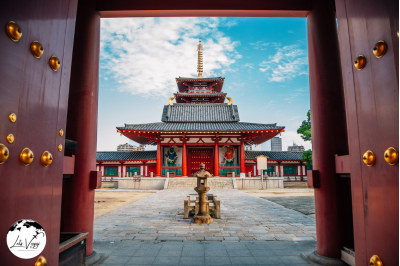
Founded in 593 CE by Prince Shotoku, who introduced Buddhism to Japan, Shitennoji claims to be the country’s first officially established Buddhist temple. While fires and wars have necessitated numerous reconstructions (most recently after World War II bombing), the temple maintains its original 6th-century layout—one of the oldest designs in Japanese Buddhism.
The temple complex includes a five-story pagoda, main hall (Kondo), lecture hall (Kodo), and an immaculately landscaped garden. On the 21st of each month, the temple grounds host a lively flea market where locals sell everything from antiques to home-cooked food, creating an opportunity to experience community life seldom available to tourists.
Basic Informtion
Address
Shitennoji Temple 1-11-18 Shitennoji, Tennoji Ward Osaka, 543-0051 Japan
Opening Hours
- Temple Grounds: 8:00 AM to 4:30 PM (April to September) 8:30 AM to 4:00 PM (October to March)
- Gokuraku-jodo Garden: 8:00 AM to 4:00 PM
- Treasure House: 8:00 AM to 4:00 PM
- Closed: No regular closing days
- Last entry 30 minutes before closing
Contact Information
- Phone: +81 6-6771-0066
- Website: https://www.shitennoji.or.jp/
- Email: info@shitennoji.or.jp
Transportation Options
By Subway
- Shitennoji-mae Yuhigaoka Station (closest)
- Served by: Tanimachi Line
- 3-minute walk to south entrance
- From Osaka/Umeda: Tanimachi Line (20-25 minutes)
- Tennoji Station
- Served by: Midosuji Line, Tanimachi Line
- 10-minute walk to west entrance
- From Shin-Osaka: Midosuji Line directly (25 minutes)
By Train
- JR Tennoji Station
- Served by: JR Loop Line, JR Hanwa Line, JR Yamatoji Line
- 12-minute walk to west entrance
- From Osaka Station: JR Loop Line (15 minutes)
- From Kansai Airport: JR Airport Express to Tennoji (50 minutes)
- Tennoji-Ekimae Station (Osaka Abenobashi)
- Served by: Kintetsu Minami Osaka Line
- 12-minute walk to temple
By Bus
- From Tennoji Station: City Bus #62 to “Shitennoji-mae” stop
- From Osaka/Umeda: City Bus #62 to “Shitennoji-mae” stop
- From Namba: City Bus #46 to “Shitennoji-mae” stop
Parking Options
- Shitennoji Temple Parking
- Fee: ¥400/hour, maximum ¥1,500/day
- Capacity: 30 vehicles
- Located at the temple’s east entrance
- Tennoji Park Underground Parking
- Fee: ¥300/hour, maximum ¥1,800/day
- Capacity: 250 vehicles
- 10-minute walk to temple
- MiPark Shitennoji
- Fee: ¥200/30 minutes, maximum ¥1,200/day
- Capacity: 40 vehicles
- 5-minute walk to temple
- Times Parking Tennoji
- Fee: ¥300/hour, maximum ¥1,500/day
- Capacity: 60 vehicles
- 7-minute walk to temple
Nearby Attractions
- Tennoji Park – Adjacent to the temple
- Tennoji Zoo – 5-minute walk from temple
- Osaka City Museum of Fine Arts – In Tennoji Park (5-minute walk)
- Abeno Harukas – Japan’s tallest building (10-minute walk)
- Shinsekai – Nostalgic district with Tsutenkaku Tower (15-minute walk)
- Tennoji Station/Q’s Mall – Major shopping area (10-minute walk)
- Hozen-ji Temple – Historic temple (20-minute walk)
- Isshinji Temple – Famous temple with unique Buddha statues (15-minute walk)
America-mura (American Village)
This youth-oriented shopping district represents Osaka’s counterculture hub, with street fashion boutiques, vintage clothing shops, record stores, and casual eateries catering to trend-conscious locals. Named for its early focus on imported American products in the post-war years, America-mura continues to embody Osaka’s openness to external influences while maintaining a distinctly local interpretation.
The area’s central park—colloquially called “Triangle Park” for its shape—serves as a gathering place for street performers, skateboarders, and people-watchers. Fashion photographers often scout the surrounding streets for cutting-edge styles that may predict upcoming trends.
Basic Information
Address
America-mura (Amerikamura) 1 Chome to 3 Chome, Nishi-Shinsaibashi Chuo Ward, Osaka, 542-0086 Japan (Triangular area west of Midosuji Avenue, between Dotonbori and Shinsaibashi)
Opening Hours
- Open-air district with 24/7 access
- Most shops: 11:00 AM to 9:00 PM
- Clothing stores typically open 11:00 AM to 8:00 PM
- Cafes: 10:00 AM to 10:00 PM
- Restaurants and bars: 11:00 AM to midnight or later
- Clubs and nightlife venues: 9:00 PM to 5:00 AM
- Hours vary by individual establishment
Contact Information
- Osaka Tourism Bureau: +81 6-6282-5900
- Website: https://osaka-info.jp/en/
Transportation Options
By Subway
- Shinsaibashi Station (most convenient)
- Served by: Midosuji Line, Nagahori Tsurumi-ryokuchi Line
- Exit 7 leads directly to America-mura (2-minute walk)
- From Osaka/Umeda: Midosuji Line directly (10 minutes)
- From Shin-Osaka: Midosuji Line directly (15 minutes)
- Namba Station
- Served by: Midosuji Line, Sennichimae Line, Yotsubashi Line
- 10-minute walk to America-mura
- Yotsubashi Station
- Served by: Yotsubashi Line
- 5-minute walk to western side of America-mura
By Train
- Nankai Namba Station
- Direct trains from Kansai International Airport (45 minutes)
- 15-minute walk to America-mura
- JR Namba Station
- Served by: JR Yamatoji Line
- 15-minute walk to America-mura
By Bus
- From Osaka/Umeda: City Bus #88 to “Shinsaibashi” stop
- From Osaka Castle: City Bus #62 to “Shinsaibashi” stop
- From Tennoji: City Bus #103 to “Shinsaibashi” stop
- Tourist Loop Bus “Osaka Wonder Loop” stops at Shinsaibashi
Parking Options
- Big Step Parking
- Fee: ¥400/30 minutes, maximum ¥2,000/day
- Capacity: 180 vehicles
- Located in the heart of America-mura
- Shopping validation available for discounts
- OPA Shinsaibashi Parking
- Fee: ¥600/hour, maximum ¥2,500/day
- Capacity: 100 vehicles
- 5-minute walk to America-mura
- Times Parking Amerikamura
- Fee: ¥300/30 minutes, maximum ¥2,000/day
- Capacity: 50 vehicles
- Located on the eastern edge of America-mura
- Mitsui Repark Shinsaibashi
- Fee: ¥400/30 minutes
- Capacity: 30 vehicles
- 3-minute walk to America-mura
Nearby Attractions
- Triangle Park (Sankaku Koen) – Central meeting spot in America-mura
- Big Step – Multi-story shopping complex with distinctive architecture
- Shinsaibashi-suji Shopping Street – Covered shopping arcade (5-minute walk)
- Dotonbori – Famous entertainment district (10-minute walk)
- Hozenji Yokocho – Historic alley with traditional atmosphere (10-minute walk)
- Namba Parks – Modern shopping complex with rooftop garden (15-minute walk)
- Mitsu Park – Small urban park (within America-mura)
- Orange Street (Tachibana-dori) – Trendy shopping street extending from America-mura
- Osaka Shochikuza Theater – Traditional kabuki theater (10-minute walk)
- Namba Grand Kagetsu (NGK) – Famous comedy theater (15-minute walk)
Tempozan Harbor Village
This waterfront complex blends entertainment, shopping, and maritime attractions. The Osaka Aquarium (Kaiyukan) ranks among Japan’s most impressive marine facilities, with a massive central tank housing whale sharks and manta rays within a spiraling exhibition path that takes visitors from the surface to the depths of the ocean.
Adjacent attractions include the Tempozan Ferris Wheel (offering 15-minute rides with panoramic bay views), the Legoland Discovery Center, and the Santa Maria cruise ship that plies Osaka Bay. The complex provides family-friendly diversion while connecting visitors to Osaka’s maritime heritage.
Basic Information
Address & Contact Information
- Address: 1-1-10 Kaigandori, Minato Ward, Osaka, 552-0022, Japan
- Phone: +81-6-6576-5501
Opening Hours
- 11:00 AM – 8:00 PM (hours may vary by individual shops and attractions)
- Restaurants typically open until 9:00 PM or 10:00 PM
Transportation Options
By Train
- Osaka Metro Chuo Line: Get off at Osakako Station (Exit 1). The village is about a 5-minute walk.
- JR Lines: Take JR to Bentencho Station, then transfer to the Chuo Line and get off at Osakako Station.
By Bus
- Osaka City Bus: Routes 88 and 60 stop at “Tempozan” bus stop
- Kaiyukan Shuttle Bus: Runs between Osaka Station/Namba and Tempozan Harbor Village
By Water Transport
- Aqua-Liner Water Bus: Connects Osaka Castle, Nakanoshima, and Tempozan
- Santa Maria Cruise Ship: Offers harbor cruises departing from Tempozan Harbor
By Car
- Via Hanshin Expressway Route 16 (Osakako Exit)
- Via Hanshin Expressway Route 4 (Minato Exit)
Parking
- Tempozan Marketplace Parking: About 700 spaces
- Kaiyukan Parking: About 1,500 spaces
- Fees: Approximately ¥500-700 per hour, with validation discounts available when shopping
Nearby Attractions
- Osaka Aquarium Kaiyukan (connected to the Harbor Village)
- Tempozan Ferris Wheel
- Legoland Discovery Center Osaka
- Suntory Museum
- Mount Tempozan Park (small hill with good views)
- Universal Studios Japan (a short ferry ride away)










2 thoughts on “Best Places to visit in Japan”
Comments are closed.